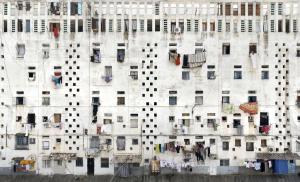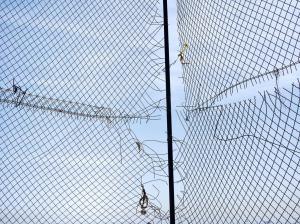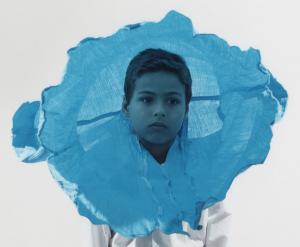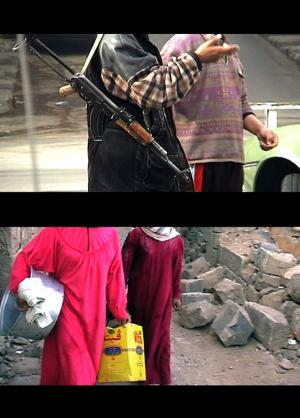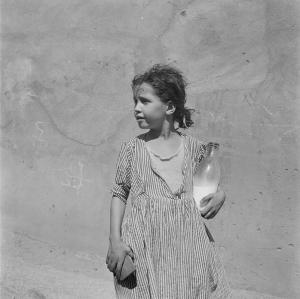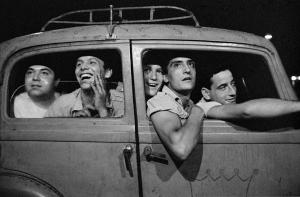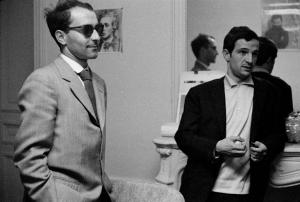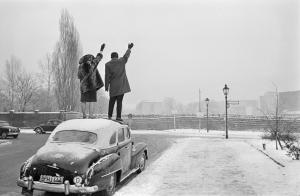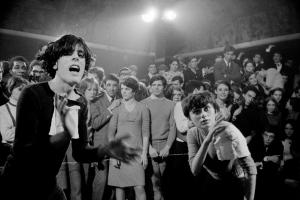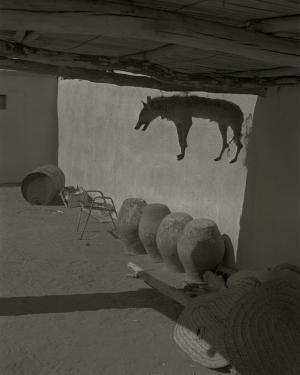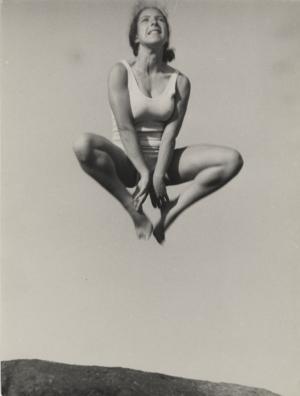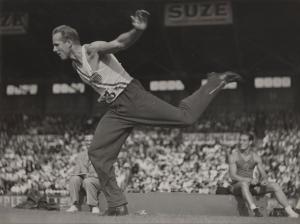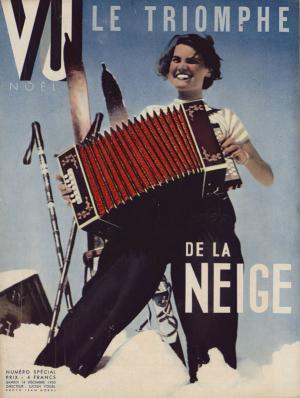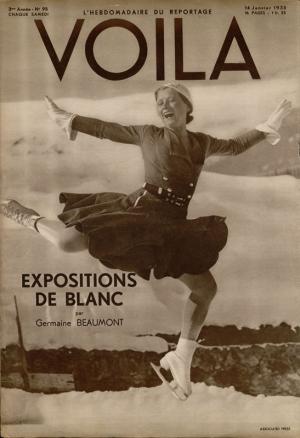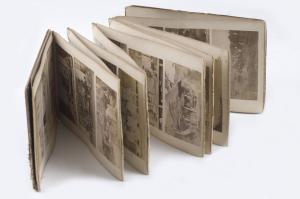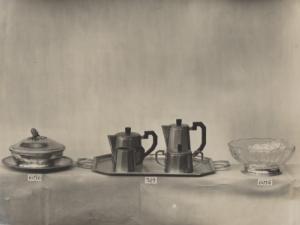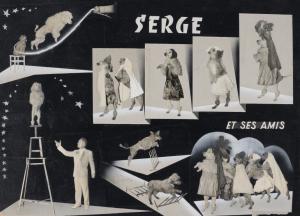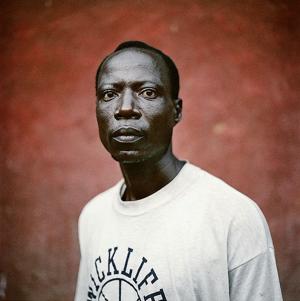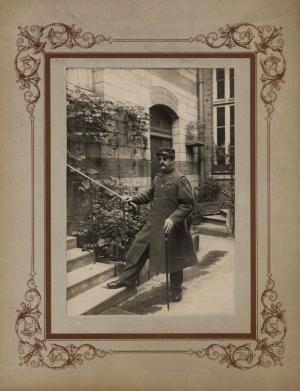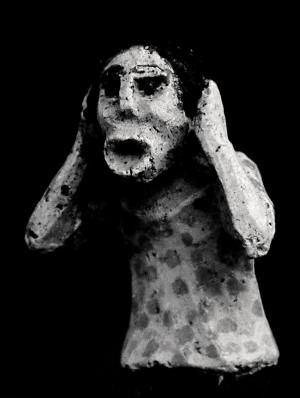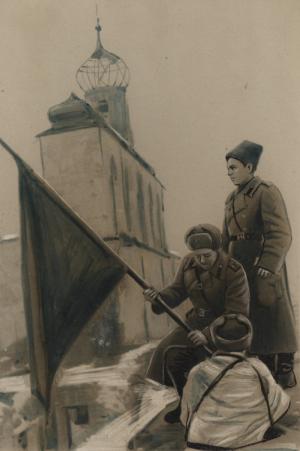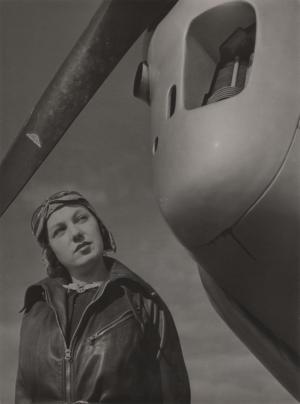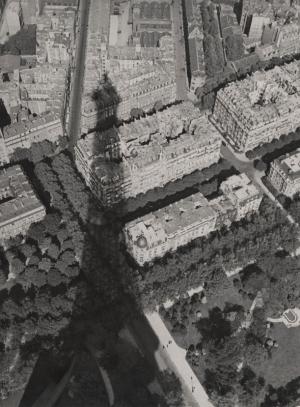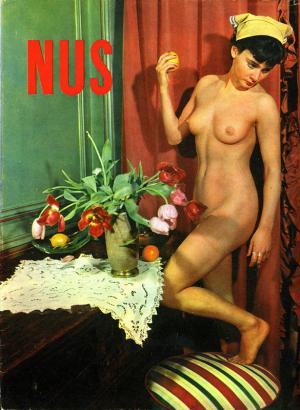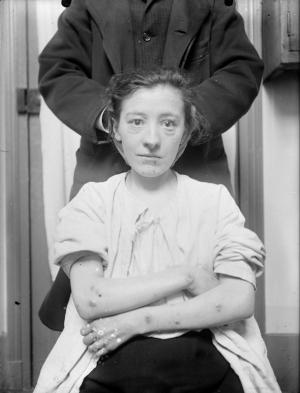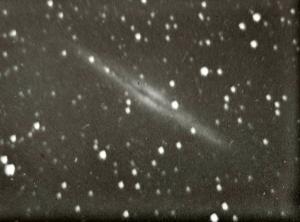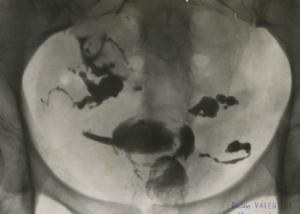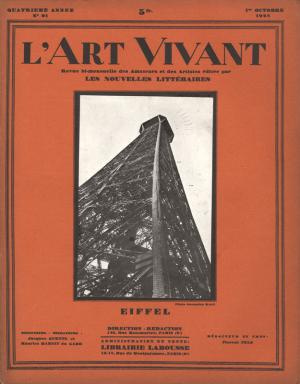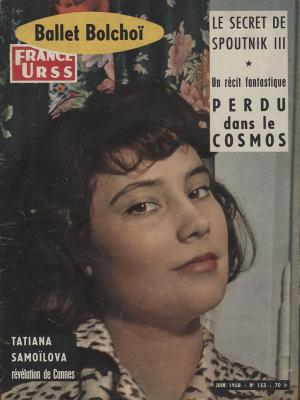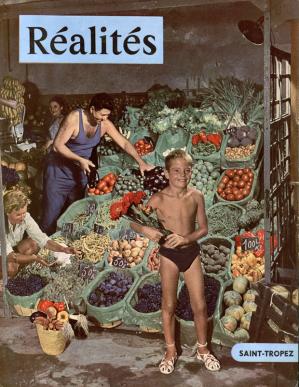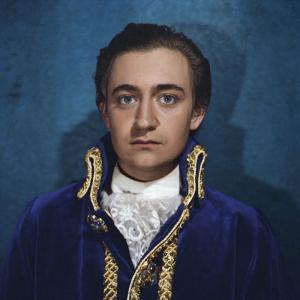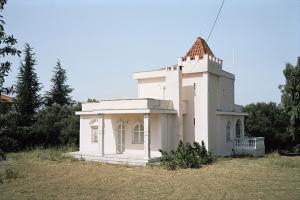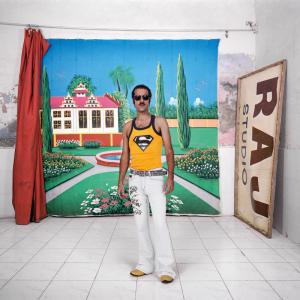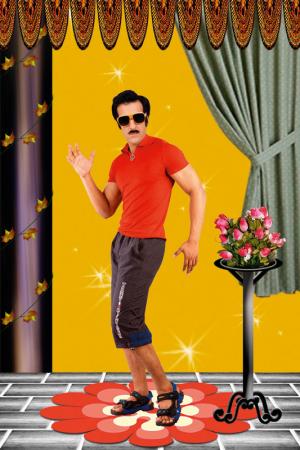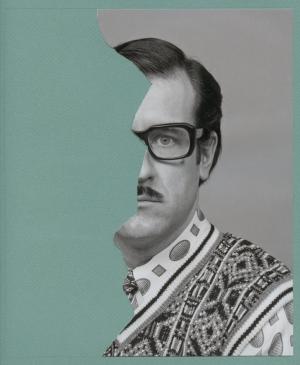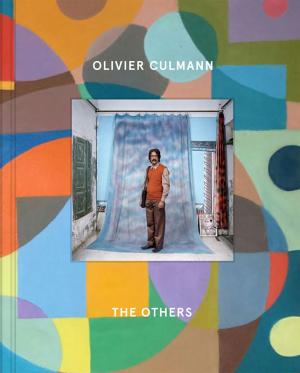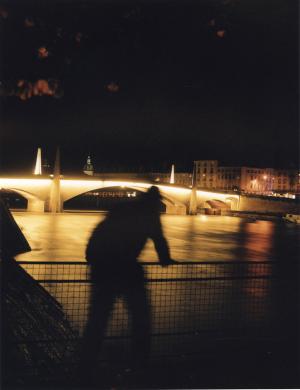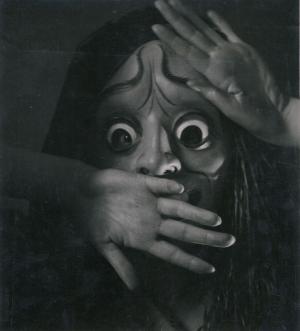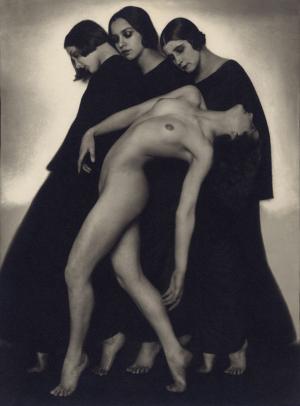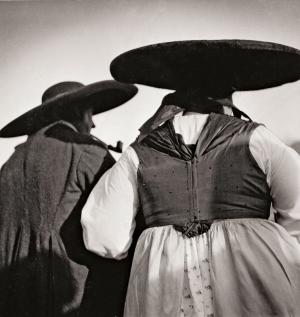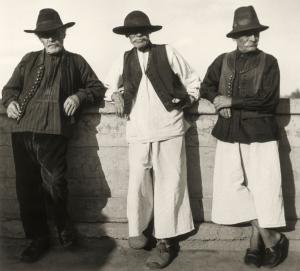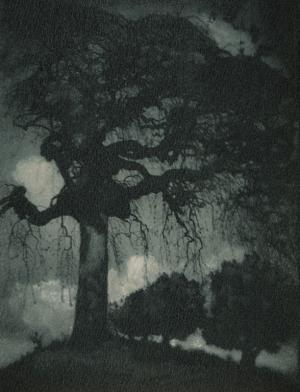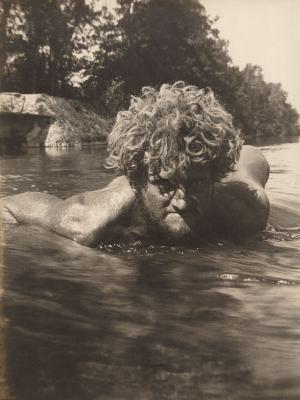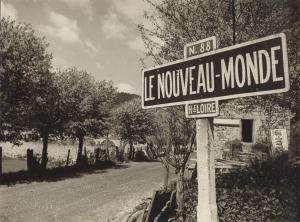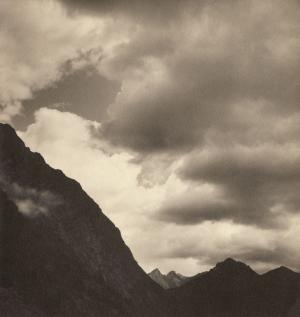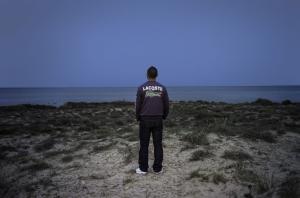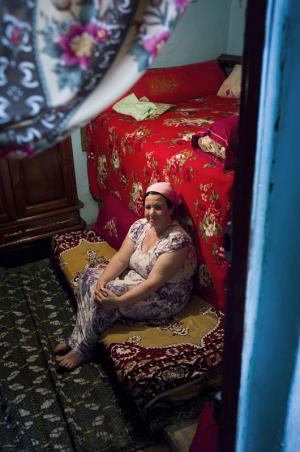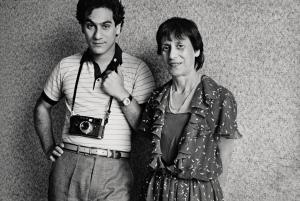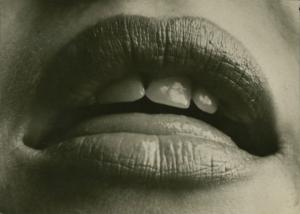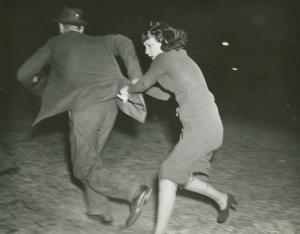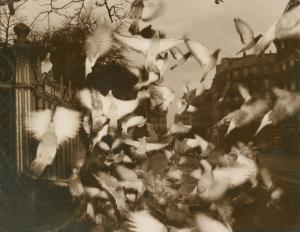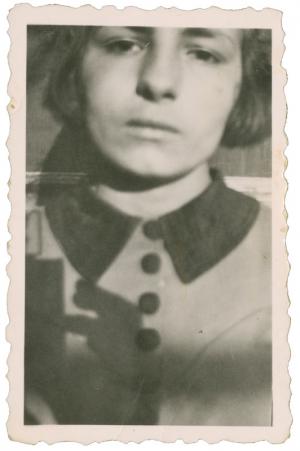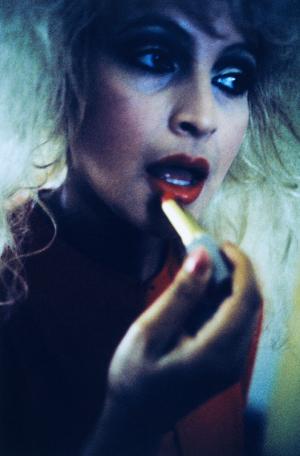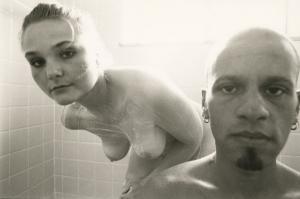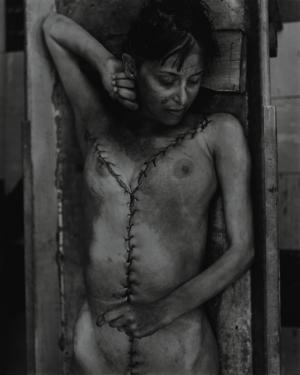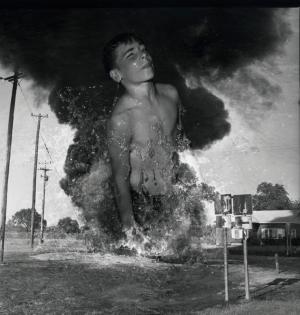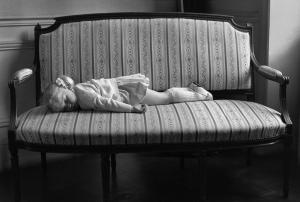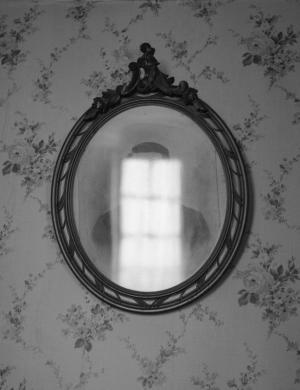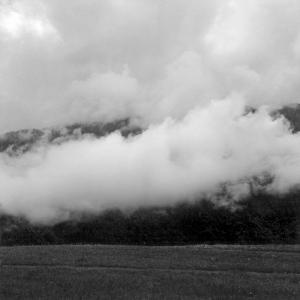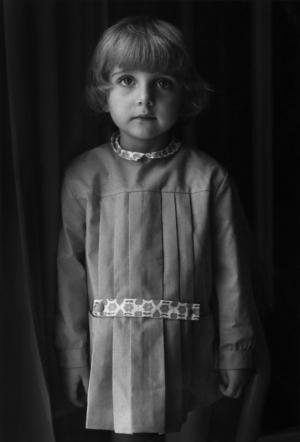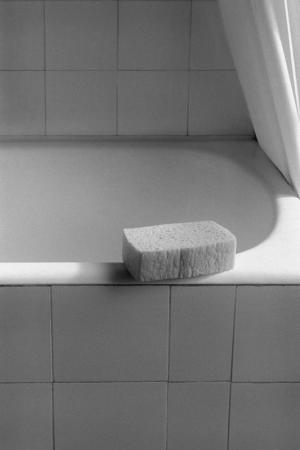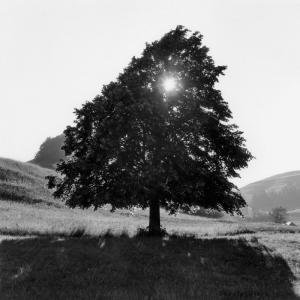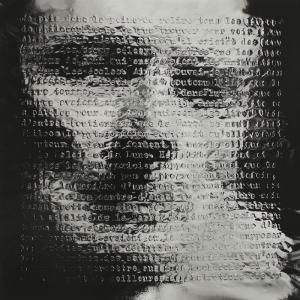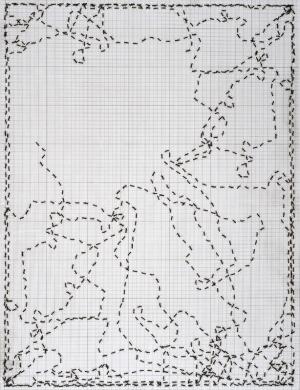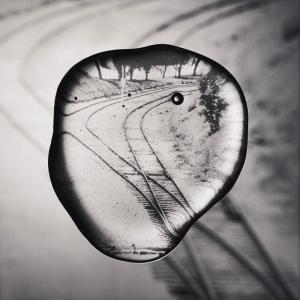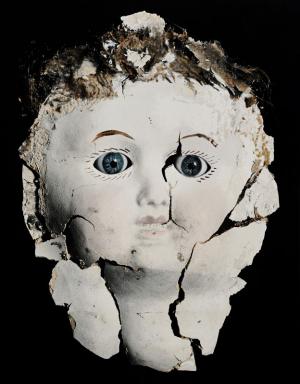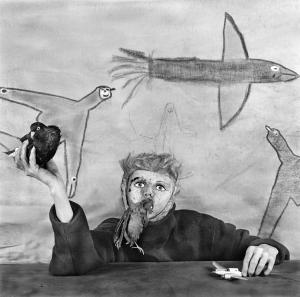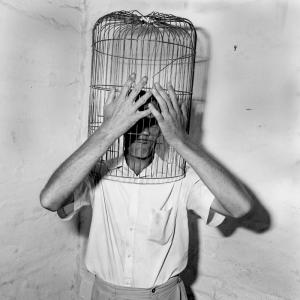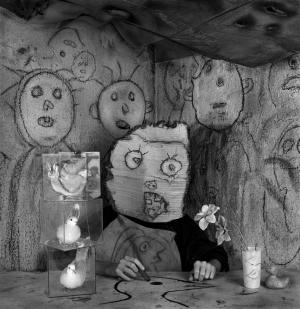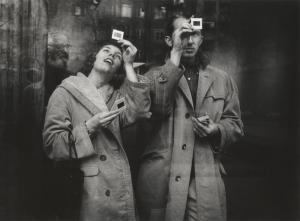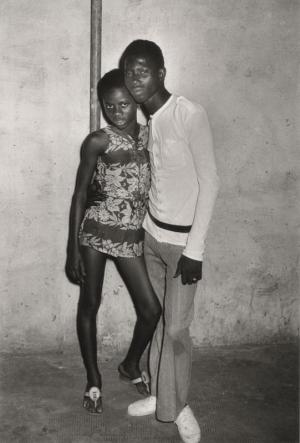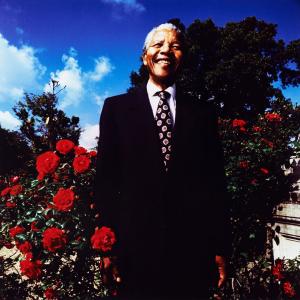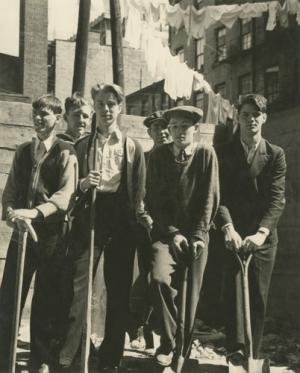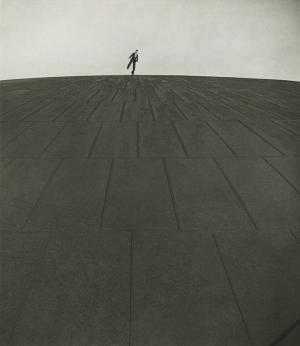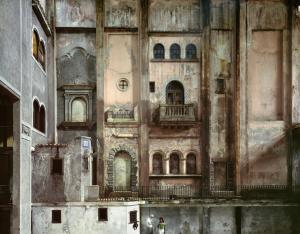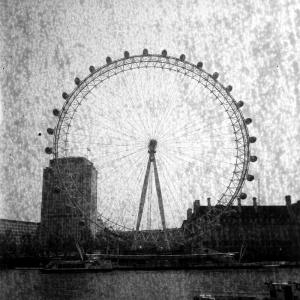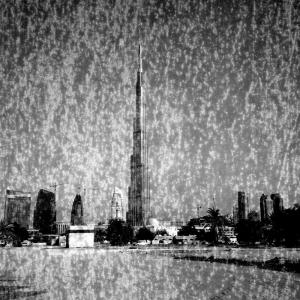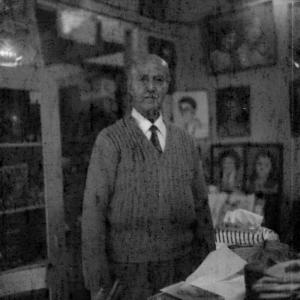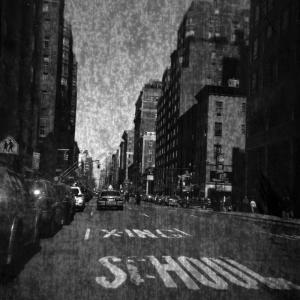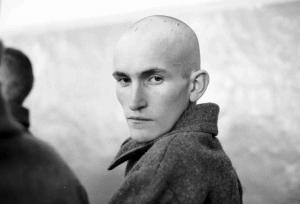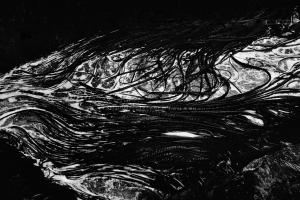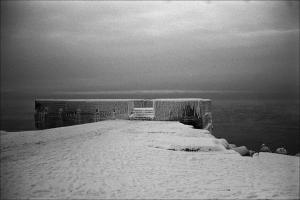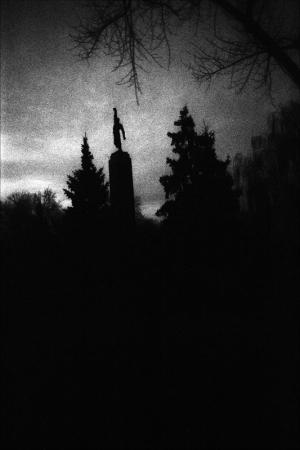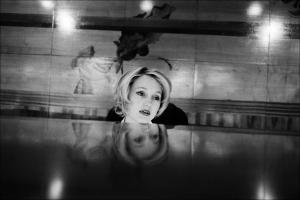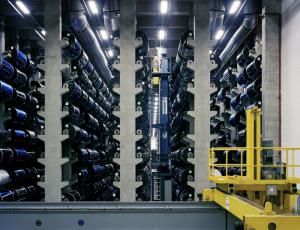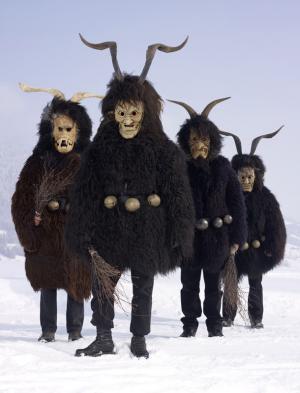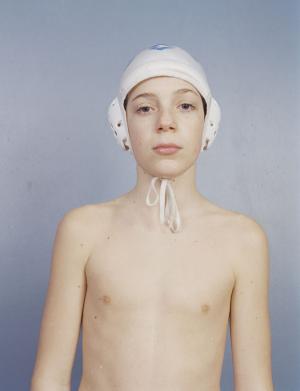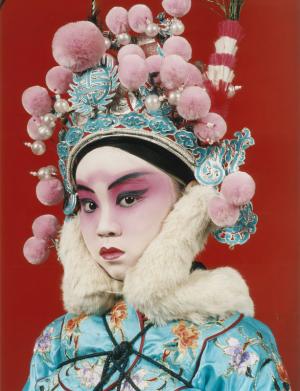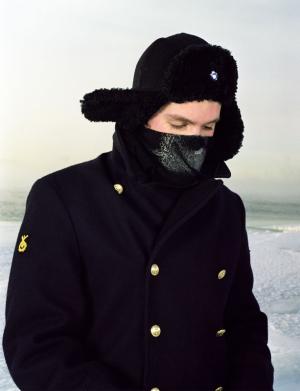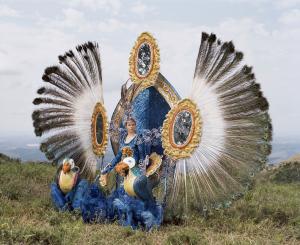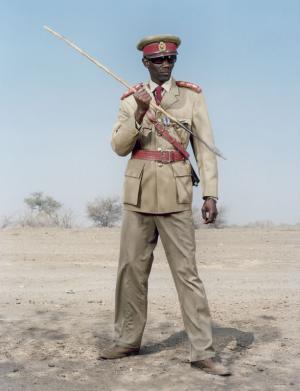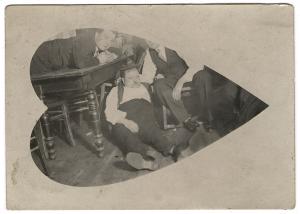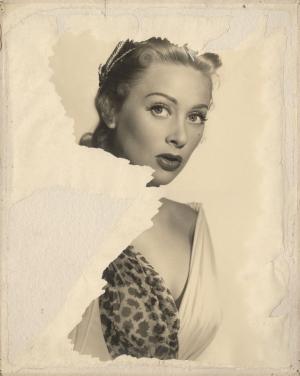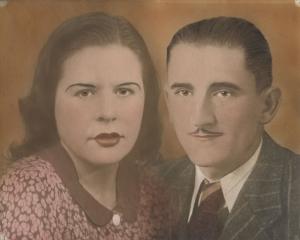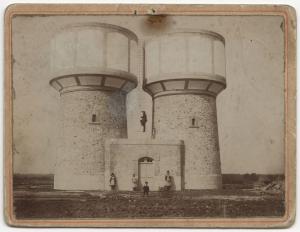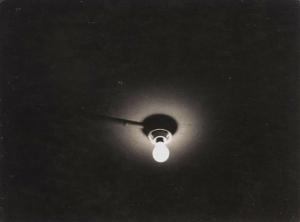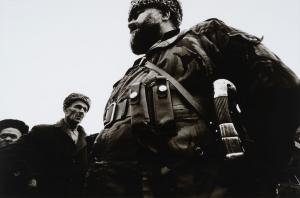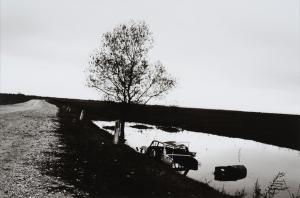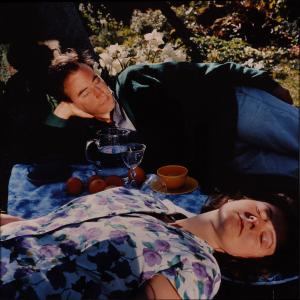Stéphane Couturier
Alger, Climat de France
10 15 2016 ... 01 15 2017
Stéphane Couturier examines urban development and the metamorphosis of buildings. With elegance, the photographer manages to reveal the “guts of the city”; his photos, whether they are taken in Paris, Berlin, Havana or Seoul, are the result of the inextricable overlapping of a hyper-realistic rendering and the dissolution of form. His project “Climat de France” (French climate) came to be in 2011 and is based around Fernand Pouillon, a figure of fifties architecture who was one of the biggest builders in the reconstruction that occurred after the Second World War. Using photography and video, Stéphane Couturier dissects Algiers’ biggest group of tower blocks, built during the Algerian war, the location of much confrontation between the GIA (Armed Islamic Group) and the authorities and now a hotbed for all types of trafficking.
The city is a collection of sequences, of course, but it remains a block. Building by building, neighbourhood by neighbourhood, portrait by portrait, Alger seems indivisible. The fragments correspond perfectly to the idea of the city. We know, we’ve said it often enough, the idea and the object cannot coincide. Nevertheless, here, Stéphane Couturier comes close to the “truth”. He does not convoke our senses but he makes us see the matter. By systematically depicting images in series, he detaches himself from a solely ‘matièrist’ depiction. His photography aims to give an account of this event through the infinite number of circumstances that accompany it.
The photographer provides us with glimpses of the living, but does so not by convoking chance. The idea of the fragmented band joins them, or, connects them to a form of thought that gives them meaning. The precise representation of the properties of that which is exposed incites the viewer to comment. The photographic method is implacable.
Is truth, then, not to be found in the precision of these lines? The knowledge of things is nevertheless inseparable from these suspended objects, running along interminable facades. That which is fleeting, people’s everyday stories, make light of the monument and its essence. Time is the main issue in this photography; each image comes with its own layers of history. Long term time is depicted beside ever-changing current events. Sheets and clothes dry and satellite dishes signal modernity. Out of time and in the moment, photography proves that nothing comes before anything else.
[…]
We see how Stéphane Couturier constitutes his photographic universe. As a viewer, believing we are contemplating extensive documentation on architecture or simply compiling an insensitive inventory, we contemplate our own relationship with order and disorder. All of these images, with their subtly repetitive construction, echo our anxieties and our desires. Photography, in olden times, liked to define good and evil. Here, the approach is more like describing the imperative of things and its antidote, the fluid. In these photographs, we never come up against the solid. Life is avoidance and withdrawal.
François Cheval



Climat de France, « an architecture without disdain »
Fernand Pouillon was an architect of Mediterranean sensibilities known for his designs of high-quality, low-cost housing developments with a great many units. The mayor of Algiers commissioned him in the nineteen-fifties to design three such projects, including the Climat de France complex. These developments were built for the purpose of relocating the Muslim population that was living in cramp conditions in shantytowns, thereby contributing to reducing social tensions and reasserting the authority of Metropolitan France.
Overlooking the working class district of Bab el-Oued and the old city, and facing the sea, Climat de France was the biggest of these developments, offering nearly 5,000 housing units. (…) The main building is structured around a rectangular plaza, 233 x 38 meters long. White stone columns line the interior building fronts, giving them a classical look. Pouillon wrote:” I’m sure that this architecture is without disdain. Maybe for the first time in the modern era we have settled people in a monument. And these people who were the poorest of poor Algeria understood this. They were the ones who named it “the 200 Columns”.
Today, Climat de France is an overpopulated housing development, some of which is dilapidated and unfit for habitation. The cellars have been converted into rooms and the rooftop of the 200 Columns building – initially designed specifically with the housework and social life of the women in mind – has been turned into a shantytown. The plaza has been dubbed La Colombie (Columbia) for all the trafficking and dealing that goes on there and the police don’t enter the project anymore. But the stone architecture has nonetheless withstood these overpopulated conditions much better than concrete would have done.
Etienne Hatt
Journalist, on the editorial staff of artpress

Publication :
Stéphane Couturier
Alger – Climat de France
Texts / François Cheval, Etienne Hatt
Editor : Arnaud Bizalion
Marseille, 2014
23x32 cm
76 page
ISBN : 978-2-36980-023-1
30€
Stéphane Couturier
Texts François Cheval, Matthieu Poirier
Editor : Xavier Barral
Paris, 2016
24x30 cm
308 page
ISBN : 978-2-36511-111-9
39€

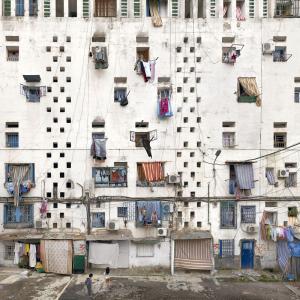
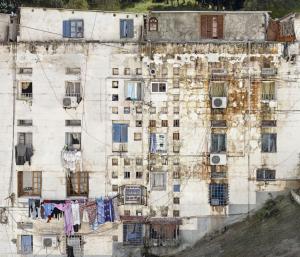
28, Quai des Messageries
71100 Chalon-sur-Saône
phone / + 33 (0)3 85 48 41 98
e-mail / contact@museeniepce.com
Classic website / Français

Lamia Joreige is an artist and filmmaker who lives and works in Beirut. She uses archive material and fictional elements to examine the relationship between individual stories and collective history and to explore the representations of the Lebanese wars and their aftermath in Beirut, a city at the center of her imagery. In the exhibition “And the living is easy – Variations on a film,” Lamia Joreige presents a three-part installation based on the feature film she made in Beirut in 2014. In this film, through the depiction of the daily life of five characters, Lamia Joreige provides us with a portrait of her native city that lies within the beauty of the images, the apparent sweetness of life, and the anguish associated with the political instability in the Middle East.
The political, social, and urban changes that have occurred in Beirut from the nineties to the present day, have transformed the city and its way of life. For the past ten years, Beirut has been a city held in abeyance, ‘frozen’ in a present that prevents us from projecting ourselves into the future, in expectation of a resolution to not only the country’s conflicts but those of the entire region. This state of suspension is at the heart of my feature film And the living is easy, which I directed in 2014 and which will be screened daily during the exhibition.
What are the questions that arise when one shifts from the filmic space to the exhibition space? What happens in the thought process guiding a piece from its origins to its creation; and, inversely, after it is realized, what happens when we undo it, rethink it, and reinvent it?
The installation And the living is easy – Variations on a film interrogates the fabrication of my feature film And the living is easy (2014) and the possible forms it creates. It is divided into three parts, or Scores (Partitions , in French)—the Screenplay , the Soundtrack , and the Cartography of the film —that reconfigure the material, space, and length of the film in the exhibition space.
There never really was a script for And the living is easy . The shooting took place in 2011 and was entirely based on improvisations. The scenes were inspired by places in the city and by the desires of the characters, who, for the most part, were not professional actors and mainly played their own roles.
Thus, Score l , the image-text is a document written after the work whose entire material it traces, from the shooting to its realization: it encompasses the shooting and the production—including the scenes in the same order they were edited—the corresponding takes that were dropped during the editing, as well as the scenes that were shot but discarded in the final cut.
The typescript, presented as a frieze of more than 15 meters, underscores the creative process while allowing for speculation and suggesting multiple readings.
Score II , the soundtrack, is a sound installation in collaboration with Charbel Haber, set up in the exhibition space. This work interrogates the notion of a soundtrack in cinema by deconstructing that of my own film and recomposing it in another form, another tonality, and within a different spatial configuration. The challenge was to use no external instrument, whether analog or electronic, and to work only on the soundtrack of the film, without adding anything, yet working on the speed, reverberation, spectrum, and texture of the sounds.
Score III reverts to the historical principle of the frieze in order to reflect on what has happened in Beirut between the time in which the film was shot and today, on a sociological, political, historical, human, and geographical level; to examine what has happened between the two periods. The film becomes a prism through which I observe this period, and its geography becomes the main thread of a collage made of photographs, videos, texts, personal notes, newspaper articles, where the real and the imaginary blend together to tell stories—quotidian events, historical movements, or imagined narratives—proposing us a non-linear reading. Here, as in my previous work, the question of history and its possible narratives is central.
As a prelude to the main installation, Beirut 1001 views , the second chapter of Beirut, Autopsy of a city (2010), will be presented in the exhibition. Evoking a palimpsest, this video based on photographs from various periods, brings together different temporal elements that perpetually fluctuate between absorption, disappearance, and reconfiguration.
Lamia Joreige




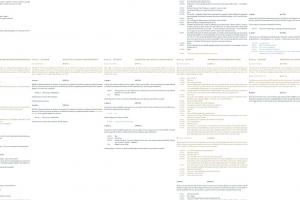
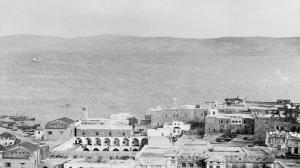

28, Quai des Messageries
71100 Chalon-sur-Saône
phone / + 33 (0)3 85 48 41 98
e-mail / contact@museeniepce.com
Classic website / Français
Famed for his monumental brushed bichromate portraits, Yan-Pei Ming attempts through them to conceive the universal portrait, without making resemblance a focal point. He is a compulsive and persevering artist, working independently of the ups and downs of ephemeral artistic trends, creating series of portraits, painted from live models, memory or from photographs. It is the latter that interests the Nicéphore Niépce: Ming has been invited to consult the collections and to conceive, like a performance piece, a unique and unprecedented exhibition based on iconic or anonymous iconic photographs from the museum’s collections.

28, Quai des Messageries
71100 Chalon-sur-Saône
phone / + 33 (0)3 85 48 41 98
e-mail / contact@museeniepce.com
Classic website / Français
The expert eye
Contemporary photography
06 18 ... 09 18 2016
In December 2016, François Cheval will step down from his job as director of the musée Nicéphore Niépce. It is an opportunity to review twenty five years of an unprecedented acquisitions policy in terms of contemporary photography.
The museum could never be referred to as a place for keeping old works of art, pieces from those with “established” pedigrees. On the contrary, it has always taken its role in supporting creation very seriously. It has hosted artist residencies, constituted bodies of work that provide a comprehensive overview of the careers of many artists, it has produced prints in tandem with the photographers themselves, it has set up artistic projects in the town of Chalon, and these choices opened the collections up to a reflection on the world and the medium through the expert eye of the artist.
This exhibition was put together with support from :
Olympus France, BMW France, Canson, HSBC, the Ministry of Culture and Communication – / DRAC Bourgogne Franche-Comté and the Friends of the Nicéphore Niépce museum.
In the original model of the musée Nicéphore Niépce, founded by Paul Jay in 1974, the photographer and the artist were one and the same. The founder surrounded himself with a range of characters such as Philippe Néagu, André Jammes, Jean-Pierre Sudre, etc, and the period gave rise to a certain affirmation of photography as an art form, nostalgic for know-how and a search for the truth of the medium as an individual creative space. Jean-Claude Lemagny’s declaration of love was taken up by Paul Jay: “To love photography carnally. The expression may seem bizarre but I simply wish to point out that all true love is of the flesh
”.
Photography was first and foremost about what could be felt. It was talked of as of a loved one, describing its tactile qualities. “Skin”, “flesh” and “matter”, such was the truth of a humble photography, far from the market, from contemporary art and its concepts. The facility of the big format was to be mistrusted, colour suspected for its vulgarity. In short, the only photographers invited to show in the museum were those who occupied the moral high ground. The contemporary photographer, a veritable demigod, an “auteur” in the full sense of the term, was almost considered to be an alchemist, an apprentice sorcerer.
Since 1996, the figure of the all-powerful photographer has been replaced by the photographer seized by doubt and uncertainty! Twenty years of contemporary acquisitions have called the medium invented by Nicéphore Niépce definitively into question. The issue became more than just introducing a new aesthetic, each image and each series spread doubt about the preconceived notions about the photographic act. It was important to avoid reducing things to the inner circles of the photographic milieu so the collection chose to provide an alternative to the “vulgar” images of the world. The contemporary collection is a militant act, embodying a fierce intention to stand up to entertainment, to a society hooked on showbiz. It shows a series of new perspectives from photography professionals, well-versed in the ruses of the medium, not by sacralised “auteurs”. To this end, the choice to only acquire complete series, to produce them often, and to create loyal relationships over time provides an overview of both the crisis in photography and its possible regeneration.
The roles we give to all of those we invite or summon are multiple and complex. They are asked, this time without humility, to rebuild the photographic object in its entirety. To do so, they are required to participate with gusto in the destruction of a tottering old edifice that is crumbling under attacks from modern media and social networks. Everything is up for grabs. All of the criteria imposed from the outside are there to be undermined; the auteur and the concept of the photographic work, that undefined category of “intention”, the arbitrary “periodisations” and the “history” of photography.
The musée Nicéphore Niépce is no longer obsessed by rarity and the unique print. Thanks to the museum’s technical facilities [ production laboratory, residencies…], it has managed to propose a new form of relationship with the photographer. The term “auteur” has been replaced the term “expert”, a term we prefer, that defines a person with the technical and cultural know-how needed to question the anthropological relationship between modern man, the camera and the world at large. The acquisition policy was constructed in a permanent state of polemic between the provincial institution and the photographer. The “subjects” surfaced after fights and debates. They took shape in opposition to the art market and the institutionalisation of art. They emerged thanks to the economic situation and the cultural crisis in photography. We once spoke of “necessary” purchases when the notion of art, which here is useless, disappeared in favour of critical but always joyful narratives. Contemporary photography can today only take credit from its attempts to bear witness not to the state of the world, but to the relationship we maintain with the autocratic image that blends with the new merchandise. It brings before us the object of predation, it exhibits a clear tendency to reduce head size, a permanent temptation to be a totalitarian and futile object, an object of social control and pure satisfaction.
It stands up to the medium’s supposed capacity and legitimacy to reproduce the real, to its objectivity.
What the eye of the expert has brought to the musée Nicéphore Niépce and to its visitors is the demonstration of a photography without any real consequences on the world, but a photography that gave the impression of a new found freedom. Liberated from narcissism, decoration and artiness, contemporary photography was set free to play with the machine and its potentialities.
François Cheval


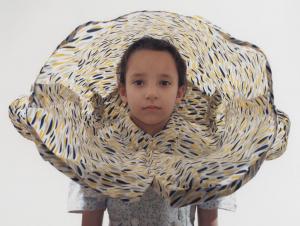
28, Quai des Messageries
71100 Chalon-sur-Saône
phone / + 33 (0)3 85 48 41 98
e-mail / contact@museeniepce.com
Classic website / Français
Léon Herschtritt [ b. 1936] was the youngest photographer ever to be awarded the prix Niépce in 1960 thanks to the work he did during his military service in Algeria. As a true humanist, he was quick to diversify his subjects, developing a particular sensibility for street scenes, young people in the sixties and their progressive emancipation, social movements, the gypsy populations…
Using the photographer’s personal archive and at times developing photographs from negatives that have not yet been used, this exhibition is based around eighty photographs that provide the viewer with an overview of Léon Herschtritt’s work in the sixties. In some way, his work bears witness to the end of an era.
This exhibition is made possible by the support of :
Canson, the Ministry of Culture / DRAC Bourgogne Franche-Comté and the Friends of the Nicéphore Niépce museum.
Léon Herschtritt’s work is a trial for the critic. The series emerge without having to be decoded. They are obvious. A prostitute shimmies, a soldier puffs out his chest, Parisian couples smooch on benches. Today, photographers are lauded for originality. Edginess is the rule and this is not a bad thing as conformism in photography lacks nuance.
However, we must not forget one of the medium’s essential qualities, to show things again and again and to comfort the memory. In this show, we retrace our steps. We take pleasure in going down well-worn paths. Today, who dares to paint the portrait of a country or a profession, who dares to feature lightness, joy, sadness and despair? Mood photography, is that in fact the simple definition of the work of Léon Herschtritt? Things aren’t that simple. It is a trial for the critic! As, given the agitation of our own constantly shifting present, we are not in a position to judge the era.
We lay claim to freedom of perception and nevertheless, we can’t help characterising this photography as melancholic. However, if we could, just for a moment, set aside that which is anecdotal and out of date, we would be forced to admit that the times were in upheaval. Behind the futile appearances, behind the equivocation, we can detect the premise of a dark future, our present. In the sixties, a time considered to have been “glorious”, nations were emerging, young people were preparing for rebellion, strikes were widespread and the world was splitting into two camps. In what seems to be an endless parade of shallow, carefree moments of grace, the photographer captures a real sense of movement, of both things and people. Today, we are aware of what nations were going through, from the fall of colonial empires to the culture crisis.
The not-so-humble photographer bears witness to the fragility of society and the futility of photography. It would be incorrect to take Léon Herschtritt for a photographer with a critical eye. Nevertheless, when he focuses on a subject, nothing is direct. His vision moves over that which is, to all intents and purposes, relatively incidental. Photography is not to be found in the answers it provides, and offers even less in terms of solutions, but it does question its participants, the actors or extras in this theatre.
Photography has never been as “devious” as to take us down a series of wrong paths and we would be mistaken to understand this way of diverting the issue as a “humanist” artifice. Léon Herschtritt gets away from the tragic, from excess and eye-catching contrasts so as to impose his lucid, clever, non-acrimonious photography. He finds the right level of expression of his work in a slightly nostalgic if somewhat sharp approach, structured around the way things and men work. The photographer’s main aim is to contain each image within a narrative that owes nothing to the great photographic works he knows and appreciates. He exercises the profession of photographer-reporter without shame, confident in the rough quality of the tool. The resources of the machine itself are enough for him to express that which lies beneath.
So it goes, the work of Léon Herschtritt, it lives without fits and starts, almost underground. In describing it one often is often misled. One could be led to think it was declining. Then, it is exhumed. It arouses more than curiosity. And, it is quite possible that one day it will awaken the uneasiness that brought it into being.
François Cheval


28, Quai des Messageries
71100 Chalon-sur-Saône
phone / + 33 (0)3 85 48 41 98
e-mail / contact@museeniepce.com
Classic website / Français
Claude Iverné has an uncommon way of working as a photographer. He refuses to be seen, despite the fact that it is now considered the norm for reportage to be in the first person. This is why this remains a resolutely “purist” vision of documentary photography, with no room for egocentrism. Reality is dark so the photographer remains in the dark.
By making the processes of “ethnographic” photography his own, Claude Iverné also adopted its principles. For him, the role given to the photographer-reporter is not enough, nor is the role of simple spokesperson for “suffering” populations. He takes on their codes and their logic. He is in no way looking for a “natural state”. We would be mistaken to think of him hunting for the “truth” of a people, on the contrary, his approach is a series of mysteries.
The reasoning that produces this photography is far from explanatory. We get close to things, through their most concrete aspect. The spirit of the series brings us face to face with the matrices and their versions. His result becomes ours: a question without answers.
Our era marks a certain defiance toward reportage photography. Is there an alternative to images whose origins are only rarely certified? Faced with the “uselessness”, or more to the point, the ineffectiveness of photography as a witness, is a regeneration of the language of documentary possible? It would appear that by inverting the order of time, by shifting away from the urgency, we can approach new territories for understanding the world.
While there is a tradition that ensures the pre-eminence of black and white photography over other modern media, it is without contest due to the virtue of silence. The fixed, monochrome image retains the quality of economy unlike the permanent flow of information, whatever its nature. Restraint, that should be the rule everywhere, is, at the very least, the murmur of reality in the situations presented by Claude Iverné…
By banishing seduction and emotion while founding an aesthetic, the photographer includes in the latter the critical possibility of the visible and its perception. The expectations of the viewer, the pre-vision of a humanitarian image being our era’s “exoticism”, are up against the only possible way to read the real, its transfiguration. The question of the restitution of the real does not necessarily require the requisition of impressions. Without logos, the operator has an effective tool at his or her disposal, a desire for distancing.
The will to “faithfully” reproduce the world is paired with a certain resolution to go beyond current affairs and with a brusque disregard for emotion. The observation of Sudanese society according to a strict procedure, amplifies the impression of a gap between the treatment of the subject and its urgency. The images do not appear as “unicas”, singular objects, but appear to us as simple elements of a complex game. Photography is a “Krieg spiel”.
Exteriority validates the commentary. The blindness of the photographer is as that of Tiresias. Faced with disaster, the operator resists by mastering the technology. The submission of the camera is the beginning of renunciation. Otherness begins where the technical aspect is subjected. Claude Iverné speaks Arab. This perhaps leads to an appreciation for the real that owes nothing to the fake poetry of travel. What is missing from these series is romanticism, they are in no way symbolic or disenchanted, nor are they crippled by Rimbaud syndrome. The practice of photography, like learning a language, is a permanent initiation to difficulty, better even, to impossibility.
Ever since we’ve known that things are bad in Africa, the continent has been left without the promise of a future. It is what it is. This is what Claude Iverné has to say. Unlike a “traditional” photographer, imbued with moral consideration, he does not raise the document to the level of testimony. And, amused by the messianic role that he has been assigned, he only sees his different interventions through a disassociation from traditional reportage. He sets up the idea that this journey reveals nothing by itself. It is a decoy, obviously, but not the most deceiving, here and now.
The images imbued with a strange tone into which the series meld, do not provoke fantasy and even less the desire to leave. The narrative focuses on the biotope’s fault lines and contradictions. The point of this work is to break with the different models of photographic narrative. Obviously, we don’t find a modernisation of the myth (at the source of the Nile!) any more than we find personal serenity. Darfur is similar in many aspects to the banality of other regions.
The lack of differentiation in the material does not lead the photographer into the abstract. The image arranges the nuance. If it refutes contrast, meaning the simplistic organisation of a split between good and evil, it is to all the better to undo the drama. The description of reality records only unqualifiable moments as they are universal. “
The way in which men
produce their means of subsistence depends first of all on the nature of the actual
means
of subsistence they find in existence and have to rep
roduce. This mode of production
must not be considered simply as being the production o
f the physical existence of the
individuals. Rather it is a definite form of activity of these individuals, a definite form of expressing their life, a definite mode of life on their part. As individuals express their life, so they are. What they are, therefore, coincides with their production, both with
what they
produce and with how they produce. The nature of individuals thus depends on the material conditions determining their production
.”
Karl Marx. F. Engels. 1845. The German Ideology.
The wish to confront the world through photography, a relationship mediated by a camera, only makes sense if the relationship is shared. Here it takes on different forms, from a published document to a photo hanging on a wall. What is important in the restitution is the situation. Whatever this means for the photographer, if the shot forms the raw material, the clue that is necessary for all ulterior commentary, then the commentary is based on the initial intention. The final event is at the heart of the photographic journey.
François Cheval

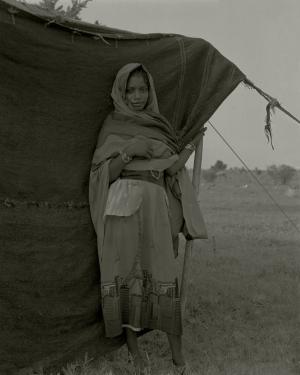
28, Quai des Messageries
71100 Chalon-sur-Saône
phone / + 33 (0)3 85 48 41 98
e-mail / contact@museeniepce.com
Classic website / Français
The thrill of movement
Sport and photography
02 13 ... 05 22 2016
It is misleading to take multiple representations of the body to be an offshoot of the photographic portrait. The portrait is a tentative approach at a psychological profile. The photographed body captured directly is a manifesto. The body needs only itself to put on a display. The portrait relies on the decor, an accumulation of attributes to bolster its meaning. Thus we go from an image laden down with objects and signs, to a stark image that focuses on the consequences of effort. The quest for movement that adorned the first photographic magazines shifted to make way for a sculptural aesthetic. While, to begin with, Marey and Muybridge were useful in the understanding of movement, photography in the thirties took on the traits of the ancient arts of sculpture and the nude. We would be mistaken to see this evolution as a passage from the eugenics of physical education to a recognition of the intimate. The social and collective practice of sport dispenses with nudity’s air of indecency. The naked body loses all its erotic meaning in favour of a societal ideal.
Gymnastics was initially a social practice reserved for the “elite”. It was part and parcel of the art of self-representation. Through the conspicuous exhibition of a straight-backed body, photography celebrated a way of life by rejecting the concept of “letting oneself go” and giving in to temptation and pleasure. The new “aristocracy” of the inter-war years, through the quest for the perfect movement, saw sport as belonging to a certain modernity that didn’t involve individualism, taking their inspiration from eugenics. Performance took over from well-being and life in the fresh air was nothing but a continuation of the prowess seen and admired in magazines.
A wide range of new magazines displayed the geometry of the body in their centre-folds. Physical education and health manuals were reduced to restricted circles. The idea was no longer to manufacture bodies that were ready to fight the barbarian (the German neighbour) and asceticism was not behind the new idea of the body. Sport photography was evidence of the power and wealth of a nation. Parallels with this new sensibility, the shift from a lifestyle to the exaltation of sporting exploits can be found in the dynamic of the press of the time and, in particular, with the development of reproduction techniques. The press latched on to the photogenic nature of the sporting body that was in fact represented as a demi-God, the heir to the Homeric hero, taken by surprise in close-up.
Sport and photography came together to define modernity. They shared the idea of a moment shared and its instantaneous nature. Photography went way beyond film as it was precise and close to the action. It transposed a moment the very nature of which was ephemeral. What in fact the magazines from the thirties invented was the transfiguration of a simple act into an epic poem. The mechanical image, supported by praise-filled text, transcended the event to turn it into a veritable collective phenomenon.
As early as 1919, those who were referred to as the “preparatists” wished to contribute to the reconstruction of France. In 1918, the power and good health of one people overcame the power and good health of another. Nevertheless, the crux now became the exemplarity of the winner and not just principle and virtue. The spectacular character of photography now required more than just bodies gambolling in picturesque landscapes. It needed the spectacular theatricality of the stadium so that the body could express its dramatic qualities and provide support for the myth. Photography thus became an essential component of a totalitarian ideology.
The value thus accorded to the body required the de-realisation of the subject, the other materiality of the corporal substance. Effort was a symbolic charge. The image of the champion’s anatomy was raised to the level of the sacred. As an unperishable envelope, it integrated into the long history of the West. However, the body of the “other” was thus dehumanised, ready to be sacrificed. The magazines of the intelligentsia and in particular “Vu” did not hesitate to associate the used-up body of the working man with the century of industrialisation. The body no longer belonged to individuals. The body of photographic modernity became a social construction, a piece of fiction.

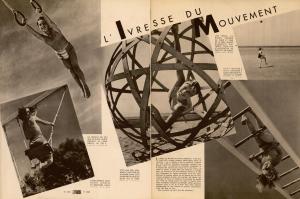
28, Quai des Messageries
71100 Chalon-sur-Saône
phone / + 33 (0)3 85 48 41 98
e-mail / contact@museeniepce.com
Classic website / Français
In all Directions
06 13 2015 ... 01 03 2016
Understanding the photographic. More than ever, the musée Nicéphore Niépce continues to affirm its position as an all-purpose photography museum. It promotes photography as a whole that, since Niépce’s initial foray, cannot be reduced to just art and technique, or to the blend of the two disciplines. The choices are partial, this is not an exhaustive show, but one that emphasises the educational link between the photographic object and the spectator.
“Tous azimuts” (In all directions) presents recent and heretofore unseen acquisitions. The pieces include both purchases and donations and are a timely reminder of the museum’s vocation to assemble, conserve and show photography.
As a multi-faceted, ever-changing object, photography can be shown on walls, in books and magazines. It is freely exposed in family albums. To perceive photography in its coherent state and attempt to rebuild a photographic archive in its totality means going back to the way it links to our obsessions, our desires and our perversities; at the risk of putting the staggering panorama of humanity’s fascination for the medium on display.
An advertising object
From the end of the 19th century, the demonstration power of the photography made of it an advertising object. But it was especially between the two wars that the photography was able to exceed the former advertisement based on text and drawing. Praising a product’s advantages, a brand or a commercial chain, it displayed on every kind of medium: poster, catalog, calendar, letter holder… The image’s impact is instantaneous. This one is supposed to prove the veracity of the message. At this time, the advertising image got back and was inspired by the avant-garde’s plastic experiments: photomontages, use of typography and color. Besides, it’s not harmless to note that the greatest photographers worked for advertising market.


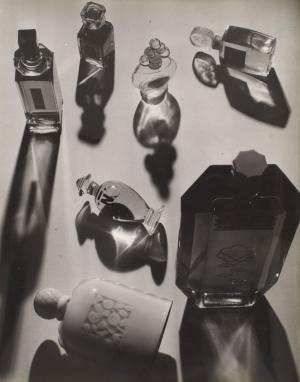

Photography in wartime
Photography in wartime is a multi-faceted genre. Its principal characteristic since 1914 has been, above all, the way it has been controlled to be used in the press as propaganda. Images were often retouched, scenes reconstituted after the fact. Photography became a weapon of persuasion to reassure the population (showing nothing) and to terrorise the enemy (showing them decimated). Totalitarian regimes added the cult of leadership to the mix by flooding conquered territories with thousands of solemn and intimating portraits. Then there were the souvenir photographs taken by soldiers that were, at times, very supervised.
The mission of photo-reportage from the thirties onwards was to show what was going on in the wings, that which was hidden, to incarnate the conscience, to contribute to changing things – in vain. The representation of horror has never prevented it from existing. This horror can only be evoked through metaphor, transposition, like the way Laurence Leblanc takes close-up shots in modelling clay of the characters in a Rithy Panh film in the Khmer genocide. Or how Alexis Cordesse gathered testimonies from ex torturers from the Rwandan genocide that he put together with their intentionally banal portraits. The image does not work as immediate proof, it is instead a testimonial. The effect is no less forceful, it is amplified.

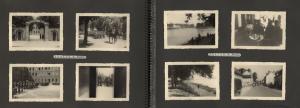

Identify
Photography quantifies and measures; it allows us to recognise, to identify. Thus, at the end of the 19th century it became a precious tool for police. Mug shots began to appear in criminal files and the first wanted posters to tackle the problem of re-offenders. Bertillon set up the first anthropometric database that used pictures and different measurements of the human body. The method was applied to increasingly broader swathes of the population, stigmatised as dangerous or potentially threatening: anarchists, nomads, political opponents, especially in the colonies… In France, the first identity cards with photographs were created in the 1890s. Identity cards for foreigners, French people, civil servants, exit and transit visas, residency permits, Ausweis under the Occupation… the administration counts, categorises, investigates, supervises.


Thirties
In the early thirties, photography became more experimental. It brought a broader repertoire of shapes and scenes to modernity, with new and founding attitudes. According to the artistic, social and political evolution of the time towards global transformation, photography’s “Nouvelle Vision” envisaged the visible through the geometry of bodies, factory materials and the beauty of the machine. In describing modern bodies, in photographing revolutionary architecture, in the scenography of a portrait, the photographer removed all that was superfluous from the frame. Today, we can only stand back and admire the common oeuvre of the “New Vision”, that owes everything to German and Hungarian immigrants, to the banished, the Jews, women and communists who made French and Parisian photography the melting pot for the renewal of the medium.

Nude
In the 19th century, photography perpetuated the tradition of the artistic nude as practiced in the fine arts. The body was treated as a study, an academic notion. While modesty remained the norm, and despite censorship, this did not prevent the proliferation of erotic images that made the nude photography’s first source of income. As early as the twenties, photographers highlighted the aesthetic qualities of the nude, in tandem with the widespread movement of liberation for the body in general. It was generally shot close-up, fragmented, starkly; it became a pure, aesthetic object sculpted by the light. In parallel, a type of erotic and kitsch photography continued to circulate under the table (Horace Roye). Today, free from censorship, photography has dispensed with traditional criteria of beauty and place the body, face and sexual organs in the same shot.

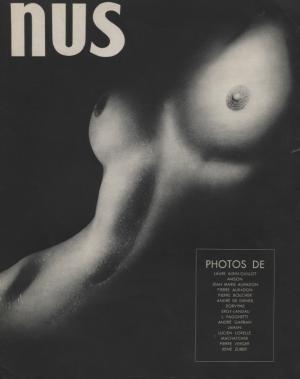
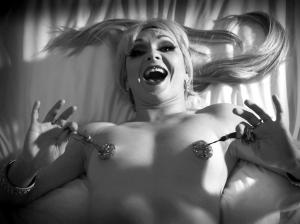

See beyond
The technical precision of photography that was boasted about from the very start, allowed the world to see beyond its field of perception. The photographic plate offered a huge range of detection: every tiny point of light could be captured as long as the brightness levels were high enough and the length of time sufficient. This is how photography certified the existence of some stars that had heretofore only existed on a page through mathematical calculations. It was also with a photographic plate that Röntgen revealed X rays in 1895. Photography allowed precise observation, the accumulation of details could be studied and identified making it useful to scientific progress. Many medical disciplines took it over such as psychiatry. Photography became the instrument that was essential to demonstration. Taking things further and affirming that it provides proof was but a step away, a step taken by certain unscrupulous “spirits”…


Publishing
Publishing brought photography to another level. From the illustrative in early 20th century newspapers, it led to the implosion of the traditional magazine just after the First World War, making photography the main player in modernity. The photographer became a reporter. The world was from then on seen with a subjective eye. Roto-engraving was to change everything and emancipate the image from the text. Every week, the reader got not only an illustration of the world, but the world itself. The image was no longer alone, it became part of a series. The double page grabbed the reader’s eye. Visual culture was born. These magazines provided visibility for photographers and their first critiques.

Current photographic art
The museum’s support for current photographic art takes various forms: acquisitions from photographers and galleries, grants to support projects or our artist in residence programme. The latter enables a photographer to conceive and produce an artistic project with the added advantage of the experience and availability of the museum’s photographic lab. This has meant that Virginie Marnat-Lempoels got a chance to explore female stereotypes at her leisure, such as the rich American lady surrounded by a décor that tells so much of her social origins. On the other end of the scale, Jake Verzosa did a series of portraits of the last tattooed women of the Kalinga tribe in the Philippines. Marion Gronier attempted to capture the feeling of abandonment of circus artists who go from the lights of the ring to the anonymity of their temporary dressing rooms. Stan Guigui depicted the misery and violence of El Cartucho, Bogota’s cour des miracles and joined the Mariachi community for a time… Photography is universal and the points of view on show here are multiple.
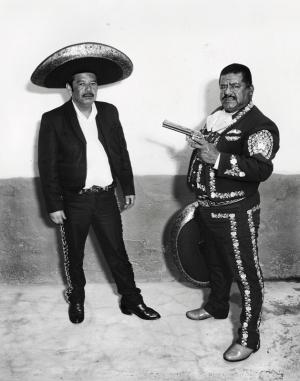
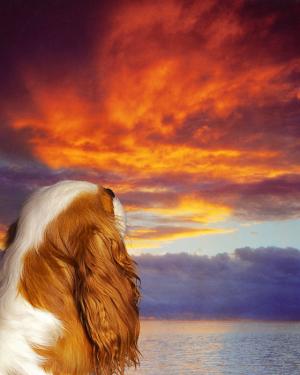
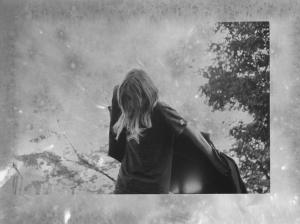

André Mérian : Water Front
As part of a commission for the “Marseille Provence European Capital of Culture », André Mérian photographed the ports of the Mediterranean, questioning unscrupulous urban sprawl, the result of property speculation. It is far from banal when for the first time in the history of geology, such huge transformations have been carried out to the structure of the landscape. For a photographer who choses to represent real landscapes, there is more sadness in depicting this world than in praising the beauty of the view. In the tradition of Marville or Atget, he records the passage from one world to another, showing us the end of a myth.
28, Quai des Messageries
71100 Chalon-sur-Saône
phone / + 33 (0)3 85 48 41 98
e-mail / contact@museeniepce.com
Classic website / Français
Olivier Culmann
The Others
10 17 2015 ... 01 17 2016
Olivier Culmann presents us with a strange portrait gallery. The Indian man appears in many forms before our eyes without ever revealing his true identity…
Olivier Culmann began to shoot this series between 2009 and 2011, when he was living in Delhi, and kept shooting up until 2013. The Others will be presented in full for the first time at the Musée Nicéphore Niépce. In a series that includes over 130 photographs, the photographer questions the way in which social status is elaborated through the construction of self-image and explores the limits of the photographic medium.
The Others is an examination of the codes of Indian society and their modes of representation. The photographer’s basic material is a series of self-portraits. In each one, Olivier Culmann applies the visual and sartorial specifics that define each Indian to himself. In a society as compartmentalised as India’s, he means to highlight the variety of elements that make up the identity of an individual: religion, caste, class, profession, geographical origin…
The portraits are split in four phases, according to the different iconographic creative processes in India: neighbourhood photography studios, Photoshop used by digital labs, painting…
__
Phase 1: portraits taken in a photography studio
The studios represented in these shots are neighbourhood studios in different Indian cities, notably in Delhi and the surrounding regions, Chennai, Pondicherry and Mumbai.
__
Phase 2: portraits using digital equipment
In the neighbourhood studios, a range of backdrops is often available: a patterned curtain, a photographic mural or a landscape painted on the wall itself. When a client comes to have his or her photograph taken, they can also borrow various items of clothing (jackets, shirts, ties…) for the duration of the shoot. With the advent of digital technology, backdrops are easily created on the computer. The client, whose silhouette is cut out in advance, can thus choose the backdrop (reconstituted studio backdrop, Swiss mountain scape, Taj Mahal…) in front of which he or she wishes to be pictured.
Photographers also offer the option of the already well-dressed and well-presented headless body, on to which the client’s head can be attached and slid into place by the retoucher/photographer. Faceless bodies are also available (hair and ears are part of the package), as are various types of headgear (hats, berets, turbans…), hairstyles, various accessories (armchairs, couches, bouquets of flowers…) and frames with motifs.
The phase 2 portraits blend this digital material with the faces on the initial portraits.
__
Phase 3: recomposing and colouring damaged photographs
Repairing family photographs that have been damaged (by time, damp, ripping…) is common practice in India. It is often done when someone dies to restore an emblematic photograph of the deceased. The photo is usually seen on the wall at home or in the family business. It is a guarantee of filiation and its symbolic meaning seems more important than the actual faithful reproduction of the ancestor’s physical traits. In line with this practice, Olivier Culmann gave various digital retouching labs half a torn photo. He then asked them to reconstitute the face entirely and to colour the photo as they saw fit. Some added backdrops.
__
Phase 4: paintings from photographs
Painting on photographs is common in India, especially for shop signs and more traditionally for film posters. Using this skill set as a base, Olivier Culmann gave a Delhi painter a number of black and white photographs and asked him to paint them in different styles (mostly from film poster types). Just like with the repair work, he let the painter choose the backdrops and the colours.
The original paintings will be on show in the exhibition.
__
Olivier Culmann
The Others
This exhibition was co-produced with Tendance Floue and Central Dupon Images.
With support from Canson, Olympus France, La Souris sur le gâteau and the Hôtel St Georges in Chalon-sur-Saône.
All of the photographs for this exhibition were printed on Canson gloss 310g premium paper in the laboratory at the Musée Nicéphore Niépce.
A tie-in book is available from Editions Xavier Barral.
Publication /
The Others
Olivier Culmann
Editions Xavier Barral
Bound & covered
21.5 x 26.3 cm
196 pages
Approx. 140 colour photographs
Texts: Christopher Pinney, lecturer in anthropology and visual culture at London’s University College, François Cheval, Director of the Musée Nicéphore Niépce and Christian Caujolle, Associate Lecturer at the Ecole Nationale Supérieure Louis Lumiere, critic, independent curator.
__
Extracts:
Clothing oneself is no longer a functional necessity for humans, and has not been since time immemorial. The act of clothing oneself has transmuted into a game ruled by social convention. Appearance decides, even configures the real. The fictional lives that follow one another in the New Delhi studio are no more illusory than the “real” pseudo-images that come before. Faced with these decorated scenes, the only “incontestable”’ objects, we rediscover the consistency of likelihood. By playing with pretending, the photographer exhumes the weight of destiny that covers us. The shapes, colours and textures are all signals we address to our peers; the ones we want to stand out from! Faced with the inevitable, we put on the rags and adopt the attitude that others have determined for us.
Each photograph, or more to the point, each scene, is an event that is both derisory and perfectly apt. The portraits compose a collection of short stories. They do not pretend to reduce the different components of the Indian population to farce, but merely to reflect the spirit of the times. In the harsh light of the studio, these reconstituted lives rise above a reality that is never recognisable and is always unintelligible. In the knowledge that we are aware of the state of the world, rather than giving us the same photographic narrative on the Indian sub-continent, Olivier Culmann gives us his fugitive impressions. Freed from the weight of the past, his portrait-prototypes are notations, better, as narratives. The various elements of the image are clues to interpret and to bring the spectator closer to others in the hopes that they will end up with a fabric of hypotheses at their disposal. The apparently unrelated objects, the poses and situations form a logical chain to be reconstituted.
[…]
What we present to others is an ideal of the fantasised figure, the seal of identity. However, here, identification is inseparable from dissimulation. The figure’s make-up and poses redefine the character’s visibility levels. The subject, or the person, is in no way a “natural” being. In this constant swing from the norm and the search for one’s own identity, the person attempts to constitute him or herself into a coherent unity. This demand for originality pushes them to contemplate their own reflection. The mirror becomes his digital print. They search ceaselessly for faults, as if trying to spot the deliberate mistake. Anxiety reigns in this surreal world. One hunts down the imperfections that go against the self-image they desire so deeply. This concern for appearances, deliberately encouraged by merchandise, is at odds with self-awareness, singularity and autonomy. The particular attention given to one’s appearance is aided and abetted by technology. Digital identity is built in communication spaces where individuals contemplate themselves in a narcissistic manner from a closed-off space. The connection to others remains a never to be satisfied quest. And photography, despite its immense ambition, can’t do a thing about it.
[…]
Two excerpts from a text by François Cheval
Published in The Others
By Editions Xavier Barral

Olivier Culmann: Biography /
Social conditioning and free will are intrinsic to Olivier Culmann’s work. Located somewhere between the absurd and the derisory, his work puts the question of our everyday lives and our relationship with images under a microscope. He always comes back to his obsessions – and ours -, winning us over with his sense of humour and his talent for narrative.
1993 – 1999: In collaboration with Mat Jacob, his Les Mondes de l’école project was awarded the Villa Médicis Hors Les Murs in 1997
2001: Les Mondes de l’école
, published by Editions Marval
Une vie de poulet
, published by editions Filigranes
2003: Scam Roger Pic award for “Autour, New York 2001 – 2002” series
2004: Intouchables , published by Editions Atlantica
2006: His “Watching TV” series was presented at the Rencontres internationales de la photographie d’Arles
2008: The “Les Mondes de l’école” series is shown at the Eiffel Tower in Paris.
3rd
World Press Photo prize for his “Watching TV” series (“contemporary subjects” category)
2011: Watching TV
, published by Editions Textuel
“Watchers” show at the Pavillon Carré de Baudouin in Paris
2014: The Others and Diversions series shown at the Festival Images in Vevey, Switzerland
2015: The Others
series is shown at the Musée Nicéphore Niépce in Chalon-sur-Saône
The Others
, published by Editions Xavier Barral
__

28, Quai des Messageries
71100 Chalon-sur-Saône
phone / + 33 (0)3 85 48 41 98
e-mail / contact@museeniepce.com
Classic website / Français
Nicéphore Niépce’s heritage
10 17 2015 ... 01 17 2016
250 years after his birth and two centuries after the experiments that led to the world’s first ever photograph, what remains of Nicéphore Niépce? His now uncontested founding work continues to inspire artists today.
We know that the man was talented, with an intelligence powered by curiosity. Nicéphore Niépce’s life as a researcher and inventor indeed offers a striking example of stubbornness and fervour. He was infinitely tenacious, he experimented empirically from a place of naivety. For him photography, the mechanical image, was a new continent: « I am like Christopher Columbus when he made his late but certain discovery of a new world… We are moving forward with probes in our hands, on our boat of adventure; and soon the crew will all shout… land! land!!! [A letter from Nicéphore Niépce to Alexandre du Bard de Curley, “Au Gras, le 24 mai”, BnF, fonds Janine Niépce] »
He reached land in 1824 with the development of the heliograph. Finally the action of light on a photo-sensitive surface allowed an image captured in a camera which then could be reproduced and fixed. Le Point de vue du Gras taken by Niépce circa 1826 – and considered as the oldest photograph currently in existence [Coll. Harry Ransom Center, The University of Texas, Austin] - consisted of a tin plate onto which Niépce managed to “record” the view from his window in Saint-Loup-de-Varennes, outside Chalon-sur-Saône.
Nicéphore Niépce’s legacy has no antecedents and made us a people of images, inhabitants of a new continent inhabited by him alone. But in the uncertain world of contemporary culture, Niépce’s intervention has taken on so much importance that it has become the very definition of modernity. We still don’t have the measure of its effects, even better, the strange consequences. The open window is in fact a Pandora’s Box that the heirs to the genius inventor never cease to explore.
This exhibition is dedicated to these heirs. From Paolo Gioli to Daido Moriyama, it shows how contemporary creation has taken over both the character to which it renders homage but also of the result of his experimentation that it gleefully reinterprets.
Daido Moriyama’s
devotion to Niépce thus brought him on a pilgrimage on the tracks of the inventor, from Saint-Loup to Austin, Texas. “As soon as I found myself faced with this view [Saint-Loup-de-Varennes], the image of shadow and light from Niépce’s iconic photograph started to replace the real landscape in front of my eyes and suddenly, I had the feeling that I could see through Niépce’s eyes.”
A reproduction of Le Point de vue du Gras
hangs over the bed in the photographer’s Spartan room “so as not to forget the origins and essence of photography.”
This Point de vue
that has been badly reproduced so often is part of everyone’s unconscious. It comes through in a photograph by Bernard Plossu
taken by chance during a trip to Portugal from the window of the train he was sitting in.
The same photograph inspired Andreas Müller-Pohle for his Partitions digitales I (1995). Le Point de vue du Gras was digitalised then reborn in code as a series of alphanumerical signs.
Raphaël Dallaporta , opened the helio-engraving image file of the Cardinal of Amboise [Helio-engraving from the collections of the musée Nicéphore Niépcewith word processing software]. In the resulting immense series of abstract characters he then wrote the secret coded figures used by Niépce in his correspondence with Daguerre. The resulting final image contains the trace of the interaction between the two inventors.
The omnipresence of computers now allows Niépce’s work to be reinterpreted in ways that go from the most mathematical to the most zany. Joan Fontcuberta recomposes Le Point de vue du Gras in the form of a photo-mosaic of images found on Google Images. Olivier Culmann transforms Niépce’s posthumous portrait painted by Léonard François Berger [ Painted in 1854, over twenty years after the death of the model; this painting is kept at the musée Nicéphore Niépce], in an Indian portrait studio [A reference to his series The Others , which was shot in India and is on show at the same time at the musée Nicéphore Niépce], overdoing the digital retouching.
Patrick Bailly-Maître-Grand’s homage comes through the constant redefinition of the basics of the mechanical image backed up with the scientific history of photography. His credo is to discover and experiment with old techniques. With the Gouttes de Niépce , he takes shots of landscapes through drops of gelatine that work as lenses that he then superimposes on the image of the same blurred landscapes. “In this laborious home-made effort, one should see a nostalgic quest for photography’s primitive years when everything was yet to be discovered with a box, a piece of glass, some chemistry and the element of chance.”
This reworking of the photographic medium is at the centre of the work produced by Paolo Gioli as an homage to Niépce. At the end of the seventies he shifted into Polaroids, experimenting with its potential like someone discovering the past, reinterpreting Niépce’s iconic images using new materials.
The variety of viewpoints brought to the table by a group of photographers with such singular origins and careers is evidence of the wealth of Nicéphore Niépce’s legacy.
Artists:
Patrick Bailly-Maître-Grand (France, 1945)
Lars Kiel Bertelsen (Denmark)
Alexandra Catière (Belarus, 1978)
Olivier Culmann (France, 1970)
Raphaël Dallaporta (France, 1980)
Joan Fontcuberta (Spain, 1955)
Ralph Gibson (United States, 1939)
Paolo Gioli (Italy, 1942)
JH Engström (Sweden, 1969)
Daido Moriyama (Japan, 1938)
Andreas Müller-Pohle (Germany, 1951)
Bernard Plossu (France, 1945)
Emmanuelle Schmitt-Richard (France, 1968)

In tandem with the exhibition:
12 photographers pay homage to Nicéphore Niépce in letters accompanied by their “first photograph” or the shot that made them become photographers.
The texts are brought together in a book entitled
“Cher Nicéphore…”
Editions Bernard Chauveau
Texts by Sylvie Andreu and François Cheval, and the photographers: Jean-Christophe Ballot, John Batho, Elina Brotherus, Raphaël Dallaporta, Valérie Jouve, J.R., Mathieu Pernot, Bernard Plossu, Reza, Patrick Tosani and Sabine Weiss.
48 pagesISBN: 978 2363061515
20 €
(To be published in August 2015)

28, Quai des Messageries
71100 Chalon-sur-Saône
phone / + 33 (0)3 85 48 41 98
e-mail / contact@museeniepce.com
Classic website / Français
Rudolf Koppitz
[1884-1936]
06 13 ... 09 20 2015
Heir to the Viennese Jugendstil and Pictorialism, the photographic work of Rudolf Koppitz [1884-1936] magnifies the body in movement in elegant compositions that have become iconic in the history of photography. The “Rudolf Koppitz [1884-1936]” exhibition is the first big retrospective of the photographer’s work in France. It was curated by the Photoinstitut Bonartes, Vienna and brings together almost 130 photographs and documents in one unique exhibition at the musée Nicéphore Niépce.
In 1929, the first ever article on art photography was published in the Encyclopaedia Britannica . The illustration used was a photo by Rudolf Koppitz, Movement Study : we see three women draped in black in front of whom is a fourth young woman, nude, leaning backward in an elegant and controlled stance. This photo has since become a veritable icon for the way it incarnates art photography and seems to come from another time when modernity was expressed through the Nouvelle Vision and Surrealism. It was in this context nevertheless that Rudolf Koppitz [1884-1936] would become one of the main figures of Viennese pictorialism. This international movement came to be in the 1880s with groups of rich amateurs in clubs claiming the status of art for photography as a whole. To do so, it put the emphasis on what it referred to as “noble” forms of printing, inspired by painting and the graphic arts: pigmented prints, using gum bichromate, oil… The pictorialists refused the purely mechanical reproduction of the real by stylising, interpreting, blurring…
Koppitz was one of the representatives of this aesthetic. His position as teacher then director of the photographic department at the Vienna Graphische Lehr- und Versuchsanstalt [ The Institute for applied graphic arts] allowed him to exercise an influence on Viennese photographic output in general. He participated in a number of exhibitions and this, as well as presiding over selection committees, conferred a certain authority on him in art photography circles. Koppitz’s themes throughout his life are evidence of his predilection for nature and physical exercise, with an attachment to the principles of naturism that appeared at the start of the century. His depiction of nudes, including of his own body, reflected an aesthetic quest for strength and purity.
In the early thirties, Koppitz shifted away from pictorialism and adopted a more documentary, but still carefully staged style. He travelled the countryside in search of peasant authenticity. These images of the Austrian “Heimat” became popular at a time when there was an attempt to increase tourism: the State wished to depict an ideal homeland, a country of beautiful Alpine landscapes, and keeper of traditions.
[The term “Heimat” has no real equivalent in English. It reflects the notion of the homeland, native land, country, but also evokes a place that feels like “home”].
Koppitz’s aesthetic vocabulary was adopted by the Austro-fascist powers and the supporters of National Socialism. Koppitz’s own political opinions remain unclear, he died two years before the Anschluss. We are more familiar with those of his wife Anna, also a photographer and his assistant, who took a number of shots of Austrian and German youth that are aesthetically reminiscent of the work of Leni Riefenstahl. She continued to exploit her husband’s work after 1936 and by associating her own photos and her links to the Nazi regime doubtless contributed to damaging Koppitz’s reputation in the long term. Was Rudolf Koppitz naive or merely guided by his artistic and aesthetic quest? His works have a timeless and theatrical beauty that earned him the praise of his peers and a level of popularity for his nudes and dance photographs that has lasted until now.
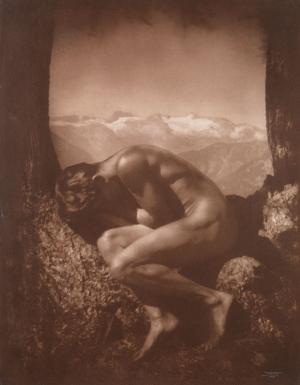
BIOGRAPHY
Rudolf Koppitz was born on January 3rd 1884 in Austrian Silesia [in the current Czech Republic] into a German-speaking family.
1897-1907
The young Rudolf became an apprentice to the photographer Robert Rotter in Freudenthal. In 1901, the young man, who was then 17 years old, passed his professional aptitude certificate and got a job in Florian Gödel’s studio in the main part of the Opava district. A year later, he moved to Brno, where he worked retouching on positives and negatives in Carl Pietzner’s famous studio.
1908-1911
In the following year, Koppitz worked for a number of different photographers throughout the country. He moved to Vienna in 1911. His first dated photographs, taken in his spare time, go back to 1908; they are of the Minoriten and St. Charles’ churches in Vienna, picturesque landscapes or cragged mountain views. His style was influenced by painting and the graphics of Art Nouveau and the Viennese secession, as well as those of the photographers of the pictorialist movement that he must have seen on show in Vienna. However, there is nothing to prove he had any direct connection with these various movements.
1912-1913
At the age of 28, Koppitz took a new direction in his photographic career by taking a course at the Vienna Graphische Lehr- und Versuchsanstalt [ The Institute for applied graphic arts]. He followed the specialist course by Novak on the artistic photographic portrait. Novak’s evident taste for the ornamental and his predilection for stylised compositions and the way he worked spaces in light and dark sections, had a lasting effect on Koppitz. In 1913, Koppitz was hired as an assistant for “portrait and landscape photography and retouching”. He preferred to work with the techniques of “noble” printing, that he continued to perfect, and tended to choose typicalpictorialist subjects: snow-covered landscapes, trees, veduta
, romantic country scenes and many portraits. He travelled through Europe, notably to Holland and Italy, where he took many photos.
1914-1918
Koppitz was drafted right from the start of the war and had to interrupt his work as assistant. He was made sergeant in a company of pilots and named “master assistant for field photography”. He first served on the Eastern front before being transferred to the photographer reconnaissance training site in Wiener Neustadt. The photos that remain from this time represent the Galician front that Koppitz romanticised in his characteristic style. Shots he took from his planes are clean, geometric, modern compositions and stand out clearly from the rest of his work.
1919-1927
When the war ended, Rudolf Koppitz went back to his job at the Institute for applied graphic arts. He was first the “master assistant for retouching”, then became a fully-fledged teacher in 1920. He became a member of the Photographic Society. In 1924, his first big personal show was held at the Vienna Chamber of Commerce. He began actively participating in other shows: up until his death, his work was seen in almost 60 shows in Austria and abroad. He met Anna Arbeitlang at the Institute, where she had been working as an assistant since 1917. They were married during the summer of 1923. Koppitz took his first nude photos in collaboration with his young wife. In early 1925, Koppitz produced his best-known work, Bewegungsstudie
[Movement study], that went on to be an international success. During this creative phase, he worked with a number of dancers. He notably photographed the members of the Russian dance troupe “Issatschenko Ballet” twice.
1928-1929
Koppitz did not just participate in international amateur photography exhibitions, as a committee member he also decided who else got a chance to participate in this type of event. He was part of the staff of the magazine Der Lichtbildner and this, as well as his numerous other photographic contributions to other trade magazines Photo- [und Kino-]Sport
or Photographische Korrespondenz
, meant he had quite a level of influence in the contemporary photography field in Austria.
1930-1935
In 1930, the international “Film und Foto” [ FiFo] exhibition took place in Vienna. Koppitz’s style changed: the symbolist compositions were replaced by shots that were more documentary and objective. He no longer used complicated printing process and shifted away from the pictorialist blur. His favourite motifs remained country life, landscapes and sport.
1936
“Land und Leute” [ The Country and the People], was Koppitz’s biggest and final exhibition, inaugurated at the Museum of the Applied Arts [now the MAK] in Vienna in February 1936. Over five-hundred pieces were exhibited with motifs depicting a romanticized view of rural life in Austria and South-Hungary.
Rudolf Koppitz died on July 8th 1936 at the age of 52. Anna Koppitz administered his heritage and continued to work as a photographer, especially during the Nazi era.
28, Quai des Messageries
71100 Chalon-sur-Saône
phone / + 33 (0)3 85 48 41 98
e-mail / contact@museeniepce.com
Classic website / Français
From 1924 to 1962, Théodore Blanc and Antoine Demilly ran one of Lyon’s best known studios. They were renowned for their portraits and dedicated their lives to photography, sharing their time between traditional commercial photography and their inventive and fertile creative work.
For over forty years, Antoine Demilly’s daughter has been gathering together the work of her father and his partner that was dispersed or thrown out once the studio closed down in 1962. Conservation was not on the cards at the time; photography was not high on the list of priorities of French institutions, and even less so the work of a seemingly banal local studio. The task was immense as Blanc and Demilly were prolific. Thousands of portraits were produced in their studio where the bourgeoisie of Lyon were regulars, as were the avant-garde artists. The photographers’ personal work was just as consequential. The variety of subjects, now often unidentified, bear witness to the eclectic taste of the two partners who, even though they often worked separately, always refused to disassociate their names.
This exhibition presents a part of this collection reconstituted as it was. The original prints are difficult to date due to damage over time and lack of care. The thirties blend into the fifties, united in the same quest for iconographical poetry.
Blanc and Demilly loved beautiful pictures and were conscious of progress so they varied their expressions, going from a pictorialist tendency to the vocabulary of the “Nouvelle Vision”. Their early adoption of the Rolleiflex and the Leica which were so easy to handle, provided them with a freedom of movement that was heretofore unimaginable. They paced the streets of Lyon, the banks of the Saône, the mountains and the surrounding countryside where they often brought groups of amateur photographers, sharing their passion.
While the activity of the studio concentrated for the most part on portraits that they modernised by removing background décor, their curiosity and taste for experimentation pushed them to other subjects, from the most poetic to the most formal. Blanc and Demilly were in favour of multiple perspectives, all subject to emotion. To grasp life at its most picturesque, most unexpected, the subject could be slight, a shadow with clean lines expressed with a simple, almost abstract composition, thus making it beautiful as if the banal were being elevated to the metaphorical. They revealed latent objects, shapes in strange light and the mist of the early morning or of twilight. These “atmospheric” simulacra were filters. They force the viewer to go beyond the raw reality of things to attain a certain visual poetry. The eye is required to lose itself in the image.
These photographs are at times disconcerting. Blanc and Demilly appear to collect locations of a “new world” whose history we do not need to know. Things that are only expressed in wanderings or solitude are silently hidden there.
But this apparent eclecticism does not mean dispersion. Each image confirms that by going beyond simple vision, we can see all of its mystery and beauty for ourselves. For Blanc and Demilly, that which is accessible to the senses gives life to a certain truth. The photographs record and transmit vibrations, indeterminate moments of the sensuality of the world. They are reflections. From one image to the next, we come onto something new. Photographic wanderings, between objects, portraits and landscapes are but a vagabond and unruly practice for the eye. Photographic modernity provides us with the possibility of multiplying our viewpoints, that is to say the experiences of a “new world”, an exploration of the near that is also a question of self-knowledge.
The photos in the exhibition come from the Julie Picault-Demilly collection.
The exhibition is co-produced with Stimultania
, photography centre.
Each year, Stimultania programmes exhibitions, residencies, mediations, concerts and various cultural events.
The exhibition coincides with the publication of a book:
Blanc et Demilly, le nouveau monde
Texts ; François Cheval, Céline Duval and Xavier Fricaudet
Lieux Dits Editions, Lyon, 2015
120 pages - 85 ill.
ISBN : 9782362191183
27,00 €

Blanc and Demilly: a timeline
Théodore Blanc (1891 – 1985)
Antoine Demilly (1892 – 1964)
1924 : Théodore Blanc and Antoine Demilly become partners under the name “Blanc et Demilly” and take over the studio of their father-in-law Edouard Bron, a portraitist and photographer in Lyon.
1933 : They take part in the “L’image photographique de Daguerre à nos jours” exhibition at the Braun gallery in Paris.
1933 – 1936 : Aspects de Lyon : 121 helio-engravings gravures in ten volumes.
1935 : They make a splash with the inauguration of one of the first galleries dedicated to photography. They show their own work as well as that of amateur photographers.
1938 : They win the gold medal for Portraits during the 15th photo and cinema exhibition in Paris.
1942 : Charme de Lyon , is published, illustrated with twenty-seven of their photos.
1947 : They show their work for the first time at the Salon national de la photographie at the Bibliothèque nationale. They continued to take part until 1959.
1951 : The gallery closed.
1962 : The Blanc et Demilly studio is sold after a few declining years. The collection of prints was dispersed.
28, Quai des Messageries
71100 Chalon-sur-Saône
phone / + 33 (0)3 85 48 41 98
e-mail / contact@museeniepce.com
Classic website / Français
Patrick Zachmann
Mare, Mater
02 14 ... 05 17 2015
Using fixed and moving images, Patrick Zachmann compares his own family story to that of today’s migrants. He tackles their relationship to the sea they cross and the mother they leave behind. He builds his narrative around the relationship between mothers and sons, between men and women.
It consists of a voyage, a voyage of memories and exiles. This voyage weaves together the threads of all those destinies I encounter: those of the migrants who leave their countries on the southern shores of the Mediterranean, fleeing unemployment, boredom, the lack of a future;of the women, the mothers, who let them go or discover they have already left. And for myself, I embark on a voyage to discover my mother’s roots, the ones she wants to forget.
This adventure that starts in Marseille and spreads over a period of two years led me to Issam, a young, undocumented Algerian migrant from Annaba who had arrived a few months previously and was already in a homeless shelter; then to Nizar, an illegal Tunisian national that I met in the street just after his arrival from Lampedusa on a makeshift boat. They both tell the story of their journey but, above all, give the reasons for leaving home and, in their own way, how much they miss their mothers. The mother figure that is sacred in Judeo-Arab culture. Underneath, we find out that in addition to poverty, they also fled a way of life, a sense of smothering, and perhaps even the mothers that adore them (perhaps too much?).
It’s the story of the Mediterranean, the story of the sea, the story of the mothers. Sometimes the sons don’t come back. Sometimes, the sons die at sea. And the, there is also the dream, the fantasy. The dream of a Europe that will never be as beautiful, as welcoming, as rich, as when seen from the other shore.
I went there, where they come from, to try to understand, to meet their mothers and listen to their side of the story of their sons’ departure, the wrench, the long separation.
This project comes also from the certainty that in the near future, I too will have to face up to my definitive separation from my own mother who is old and ill. Her death will make it impossible to ever get any answers on the gaps in her life story. The mother-son separation for which I am preparing myself, resonates with the separation that these illegal immigrants that I have filmed and photographed, that they force on their own mothers when they cross the sea in life-threatening conditions to come North.
I started to ask her questions and film her. She was 90 years old and afflicted with the beginnings of Alzheimer’s disease and she didn’t remember much, especially the details of Algeria, but she did remember how eager she was to forget.
I didn’t have any photographs – an irony for a photographer – nor any accounts of the history of my mother’s Sephardic Jewish family. She wanted to forget Algeria, the poverty, forget her origins.
Today, I take the voyage in reverse. I voyage into lost origins, the part that is missing, hidden, eliminated.
I am certain that I became a photographer in order to create a missing family album, both on my mother’s side and that of my father whose parents were deported to Auschwitz and Birkenau. I need to make memories.
So this project is the a blend of the narrative of my difficult relationship with a mother that I wanted to escape from a very young age and that in a way I have come back to in her dying days, and the perilous sea crossing of all these young migrants who leave their mothers crazy with worry on the shores of their childhood. The connections between these two worlds reflect an examination of the basics of my work as a photographer and journalist, my relationship to time and memory and my never-ending quest for identity.
Mer (sea), mother, mare, mater… Yet again my photography echoes my own story and attempts to fill the gaps.
Patrick Zachmann
Exhibition co-produced with Magnum Photos in the context of Marseille-Provence 2013, European Capital of Culture and Fotografia Europea, Reggio Emilia 2014.
A book has been published to coincide with the exhibition:
Patrick Zachmann, Mare Mater, journal méditerranéen
, foreword by François Cheval, ed. Actes Sud, 2013.
312 p + 1 DVD of the film Mare Mater
(54’’)
ISBN : 978-2-330-02395-9
Prix : 39 €
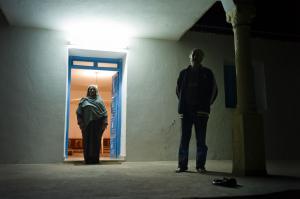
Patrick Zachmann : Biography
Since 1976 Patrick Zachmann (b.1955), has devoted himself to long-form photographic essays that evoke the complexity of the communities whose culture and identity he examines. In 1982, he entered the violent universe of the police and the Mafia in Naples. Then, he began a long personal project exploring Jewish identity: Enquête d’identité (Investigation of identity
). In 1989, his reportage of the events in Tiananmen Square was widely published in the international press. I was awarded the Prix Niepce. He’s part of the tradition of travel photographers who scrutinise the trace of History or search for timeless objects.
Patrick Zachmann is a member of Magnum agency.
28, Quai des Messageries
71100 Chalon-sur-Saône
phone / + 33 (0)3 85 48 41 98
e-mail / contact@museeniepce.com
Classic website / Français
For many years, Michel Frizot the historian and theorist has been collecting neglected photographs which have been overlooked because they were taken by anonymous, unknown photographers, unheard-of or non-celebrated artists, throughout the entire history of photography. Avoiding “museumification” and classification, selected first of all for their capacity for surprise, these photographs are no less generous, moving and perhaps “photographic” than others. This exhibition reflects on the element of mystery in all photography.
Because they are so familiar to us, because they are part of our visual space, photographic images seem to be immediately accessible and understandable. But everyone has experienced that sudden burst of amazement they can set off through suspended movements, the rendering of colours, unexpected coincidences or abruptly frozen expressions. If we pay attention to such features, they provoke the feeling that we are faced at once with something obvious and with a question. When we can look at a photograph as soon as we have “taken” it, we immediately, moreover, sense the distance between what the image tells us and what we have been able to see for ourselves only seconds before. The observation of this disparity, recognisable at every moment, is proper to the photographic phenomenon. We grant each photograph an element of truth but suspect its indeterminacy and sense its contradictions.
The photographic image is a constellation of questions for the eye because it offers viewers forms and signs they have never perceived as such and which conflict with their natural vision.
The enigma, the riddle, the puzzle would thus be fundamental to the photographic act itself.
Inherent in the photographic process, it results from the irreducible distance between the human senses and the camera’s light-sensitive capture: it arises from the split between visual perception and the photographic process.
For the eye, every photograph is an enigma.
Whether they are kept in archives, family albums or agencies, or dumped in the street, photographs are virtual objects which only begin to exist when they find a viewer. The selective collecting process is thus carried out “by eye” and not the eye of the connoisseur or the historian, but the paradoxical eye which goes against the tide of the canonically “good” photograph, it is a slow eye which opens itself to the pleasure of choice. The pursuit of irreplaceable strangeness. A determined eye, in search of what it does not yet know and yet perceives as the baring of the “photographic”, the liberated escape into a “pure” photographic act stripped of its eloquence. By repeating the selections, the eye discovers the unknown properties of the photographic image: it spots the elements of a puzzle to be savoured without anticipation of any solution. As a kind of practical application, when we look closely, these photographs seem more “photographic” than so many other images with more conventional features that quickly lose their interest. They reveal what escapes us in the recognition of the world, what lies beyond its photographic figures repeated over and over again.
The answer to the Sphinx’s riddle, it should be remembered, is humankind. And looking at a photograph means discovering oneself and the human species. Through the disparity and the dissonance between what it shows and what we experience, photography testifies above all, and at every moment, to what “being human” means. And the riddle, the enigma inherent in looking at a photograph is that of our presence in the world.
Michel FRIZOT
Extract from the book « Toute photographie fait énigme
/ Every photograph is an enigma
», Hazan, 2014
Michel Frizot is an Emeritus Research Director at the CNRS and he first began studying photography as an art historian. He taught the history and theory of photography at the École du Louvre from 1990 to 2010, and at the Ecole des Hautes études en sciences sociales up until 2010.
He edited the Nouvelle Histoire de la Photographie
(Bordas/ Adam Biro, 1994; Larousse, 1998) which stood out from previous historical accounts by including forms heretofore considered to be minor (popular photography, photos printed in magazines and books, anonymous and amateur photography, photomontages, etc.) He has written a number of articles on old and modern photography practices, monographic catalogues and exhibition catalogues (Etienne-Jules Marey, Hippolyte Bayard, Kertész, VU photographic magazine).
In parallel with his academic career, he tirelessly collected photographs that were neglected by historians, “collectors” and institutions, as they appeared to reveal photographic qualities independent of aesthetic ambitions and documentary imperatives.
Here, he shares a singular outlook dedicated to highlighting all types of photography and analysing how images are perceived.
Exhibition co-produced with the Maison Européenne de la Photographie, Paris and Fotomuseum Winterthur
A book has been published to coincide with the exhibition:
Michel Frizot, Toute photographie fait énigme / Every photograph is an enigma,
Hazan, 2014.
224 pages, 170 illustrations, french/english
ISBN : 9782754107747
Prix : 39 €
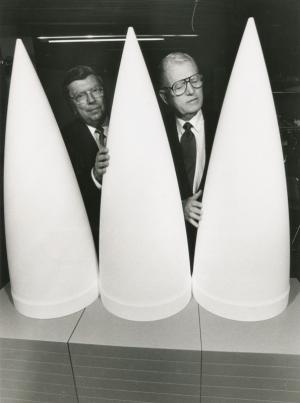
28, Quai des Messageries
71100 Chalon-sur-Saône
phone / + 33 (0)3 85 48 41 98
e-mail / contact@museeniepce.com
Classic website / Français
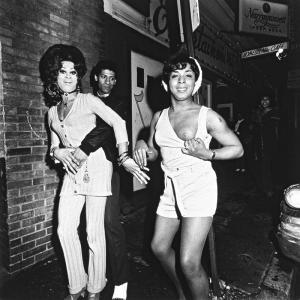
Jeffrey Silverthorne
The Precision of Silence [retrospective]
10 18 2014 … 01 18 2015
This is the first European retrospective to highlight the work of the American photographer Jeffrey Silverthorne (b.1946), who over the past forty years has explored the most extreme subjects with constancy. In morgues, where since 1970, he has managed to transcend the representation of death, to raw portraits of transvestites and transsexuals, the representation of the body in all of its states is a recurring theme in his work. References to painting’s grand masters blend with experiments in the photographic medium: superimpositions, decoupage, collage…
Death, sex…the artist examines anguish and obsession, and confronts us with our own visceral fears to help us better dominate them.
Exhibition co-produced with the Fotomuseum, Antwerp and the Galerie VU’
On that night in the 1970s all it took was a transvestite emerging from a nightclub in Providence, Rhode Island, for a photographer, instantly fascinated, to junk everything he'd learnt about good taste and Protestant morality. No forgetting his background, though, and no rejecting the masters of his craft: Jeffrey Silverthorne simply yielded admiringly to the weirdness before his eyes, to this fixation on appearance, this construction of another personality. In their play on the self these creatures – Rhonda Jewels, Joey, Dougie and Paula – were giving vent to a freedom unparalleled in a sclerotic world. Frivolity became a focus for Silverthorne in this moment of youthful revelation, of abrupt initiation into the creative act – and of the further, absolute realisation that photography alone had the power to convey the full presence of beings ostracised by society. Even the dead would find their place in this far from trivial spectacle. To exist or, rather, to cause to exist – the true photographic proof – is the privilege offered by simply being there, being different, being in front of the lens. Despite their disclaimers the members of Silverthorne's troupe – mentally handicapped people, prostitutes, illegal immigrants – retain their fascination. Passive inhabitants of the real world, in the image they are granted the recognition that has otherwise always been denied them.
Silverthorne's theatre is one of reciprocal astonishment, both the photographer and his subjects lending themselves to a narrative none of them really believes in. Each, though, is transfixed by the presence of the other. The characters obey the artist's instructions, yet they cling to their habitual poses because they cannot do otherwise. What you see is what you get, with no verbal veneer: no commentary accompanies this narrative, no explanatory analysis applies, for the photographer can ascribe no cause or purpose to what he is doing.
The entire Silverthorne oeuvre centres on the drama of death and human striving to cope with mortal anxiety. Here, paradoxically so to speak, death is revealed nakedly, but at the same time clothed – adorned even. Appearances are the sole consolation for the disappearance of being: man's real nature is to be found in his organisation of the simulacrum. In our struggle with the darkness of the human body, cover-up and deception are the only way out. Uncomprehending, we simulate, disguise and mystify, prettifying both ourselves and the dead.
Extract from the text of François Cheval
A book has been published to coincide with the exhibition :
Jeffrey Silverthorne, RETROSPECTIVE
Texts by : François Cheval, Rein Deslé, Jeffrey Silverthorne
Ca. 23 x 30 cm
Ca 160 pages, 160 color ills.
French / English
ISBN 978-3-86828-533-8
Ca. 45 euros
Kehrer Editions, October 2014


28, Quai des Messageries
71100 Chalon-sur-Saône
phone / + 33 (0)3 85 48 41 98
e-mail / contact@museeniepce.com
Classic website / Français
Claude Batho
The poetry of the intimate
10 18 2014 … 01 18 2015
Through his photographs, Claude Batho (1935-1981) examined the simplest of objects from his daily life, to familiar landscapes and his close entourage. The apparent simplicity of the representations leaves room for sensitivity, for a silent beauty often associated with black and white sliver-based prints. This simplicity turns into poetry and triumphs over banality. A women’s gesture, Claude Batho’s photography can be read as a personal diary whose subjects are not the extraordinary moments of existence but the insignificant and, as such timeless ones.
Exhibition co-produced with the GwinZegal Centre for Art and Research, Guingamp
Now that time has passed, we can look back on Claude Batho’s photographs with serenity. In this collection that is far from scattered or by chance, there a feeling of going beyond the limits of a lifetime. Her work has aged particularly well. We would so love that she and her friends and family would be able to find themselves in this new portrait, thirty years after her death. As everything seems simple in these photos. Photography seems to want to be a carbon copy of family life; a practice imbued with tenderness, made up of daily, humble gestures: when the images connect to a practical “reality” that is never far from a dream.
[…]
Such is the photographer’s instinctive effort as she attempts to discern the informal beauty of the world in clear figures. This is her great merit. She gives herself no specific virtue, accords herself no privilege. She creates no original situation that is outside the real. But she makes the photographic act into an original object as it is limping, awkward. As spectators we recognise ourselves in these images while the object remains unique forever. The fate of a successful photograph lies there. Everything is true and nothing is. This unique and autonomous universe has its own laws. It imposes itself on us and leaves no room for discussion.
This state we wish to protect precedes the catastrophe. The future is a threat. Choosing a frame is examining that which belongs to us and which we do not wish to have removed. That which is ours, are these objects and their positions. They exist in themselves and in their difference, they are another us. We have no interest in their use. Their meaning escapes us. Only their nudity matters. Through that which they convoke, they go beyond their utilitarian function to become thing and idea simultaneously. The objects we glimpse have something of the ancestral image of an offering. Practically all photography is a ritual, a daily homage to the powers of life.
In this, Claude Batho places herself not in front of nature but in its centre. Her photographic act occurs in a face to face with loss, without nostalgia, in tones of melancholic greys.
Extract from the text by François Cheval
A book has been published to coincide with the exhibition :
Co-edition by GwinZegal, musée Nicéphore Niépce

28, Quai des Messageries
71100 Chalon-sur-Saône
phone / + 33 (0)3 85 48 41 98
e-mail / contact@museeniepce.com
Classic website / Français
![Bruno Serralongue, Centurion Risk Assessment Services 2002 [inventaire Fnac 02-925] Centre national des arts plastiques © Bruno Serralongue – Galerie Air De Paris Bruno Serralongue, Centurion Risk Assessment Services 2002 [inventaire Fnac 02-925] Centre national des arts plastiques © Bruno Serralongue – Galerie Air De Paris](/var/ezflow_site/storage/images/exposition-en/actuelles/la-photo-contemporaine-du-cnap/la-photographie-contemporaine-dans-les-collections-du-cnap/21714-1-fre-FR/La-photographie-contemporaine-dans-les-collections-du-CNAP_smartphone.jpg)
Wonderland
Photographic collections of Cnap
10 18 2014 ... 01 18 2015
The musée Nicéphore Niépce is this year dedicating an exhibition to works from the collection of the Centre national des arts plastiques.
This is the result of a partnership between the two institutions, and this new show will display a selection of pieces by
Pierre Faure, Bruno Serralongue, Philippe Durand, Luc Delahaye, Claire Chevrier, Cécile Hartmann, Guillaume Janot.
Photography must always be taken in context. In the 90s and 2000s, while artists continued to explore the artistic potential of the medium as did their predecessors, they tended to represent the world and current affairs. The photographers in this exhibition, who came of age in the eighties, have witnessed society changing at an accelerated rate: political upheaval, revolution in the East, ultra-liberal economics in the West, the dislocation of society, the multiplication of conflicts around the world… all of this contributes to a feeling of insecurity and a realisation of the danger that the technological and industrial development of our societies can lead to. Photography bears witness as much as it informs, taking diverse paths to get there, from the cold eye to intentional aestheticisation. It paints the portrait of a society, “a marvellous world”, with its fair share of solitude, violence and banality.
Exhibition selection /
Pierre Faure (born in 1965)
Théâtre du fantastique
2001
FNAC n° 01-880 à 01-882
The Théâtre du fantastique
series is some of Pierre Faure’s first photographic work. He presents the city as a location for situations, gestures and relationships between individuals. By recording banal postures, everyday actions, human contact, without giving them any more importance than their environment, Pierre Faure invites us to see what we no longer see, so bombarded are we by the world’s huge bazar.
Bruno Serralongue (né en 1968)
Risk Assessment Services
2002
FNAC n° 02-923 à 02-927
The particularity of Bruno Serralongue’s work lies in his constant questioning of the objectivity of the image, from its production to exhibition.
He photographs – for himself – current affairs, the events that he hears about in the press. But he refuses to use the traditional methods of the professional photo reporter. Bruno Serralongue is interested in showing what happens in the wings, the side issues that don’t interest the usual reporter. In his series entitled Risk Assessment Services
, the photographer infiltrated a training course for “Hostile environments and first aid”, aimed at war reporters who work in conflict zones. Thousands of journalists are trained to have their reactions in the field dictated and formatted, to the probable detriment of their reporting.
Philippe Durand (né en 1963)
Still Life Armed Response
1998
FNAC n° 99050
In little touches, Philippe Durand gleans the fleeting signs that give a place its identity. He collects as he travels without really doing an inventory. In Los Angeles, signs for private surveillance firms caught his eye, planted firmly in the gardens of people’s homes. These clear warnings represent the ultra-privatisation of space in the Californian city. They represent all of the violence of an individualistic and security-obsessed society. While he does give a critical view of this reality, Philippe Durand can’t help but embellish it: the seduction of 3D, the greenery and the flowering bushes seem to attenuate the bossiness of the signs.
Luc Delahaye (né en 1962)
Northern Alliance Fighters
2006
FNAC n° 06-258
With a background in photojournalism, Luc Delahaye has made his name covering huge conflicts around the world. While his job is war reporter for the most part, he uses photography’s formal potential to create images that reveal the spectacular aspect of everyday life. His approach shows an often perilous proximity to the event, in tandem with a certain emotional distance. Nevertheless, Luc Delahaye completely owns the aesthetic dimension of his work, like the vast landscape from which the Northern Alliance soldiers emerge in their offensive against the Taliban in Afghanistan’s Kunduz region on November 22nd 2001. The format alone means the work oscillates between being a raw testimony of the event and a sophisticated image that could be a historical painting.
Claire Chevrier (née en 1963)
Leeds
1995
FNAC n° 96-604
Images without a trace of artifice of an abrupt urban reality, Claire Chevrier’s landscapes are conceived as places of sedimentation where layers of history lie on top of one another. In one, a nuclear power station that looks like a castle was transplanted onto a posh house in Leeds in Northern England. The different levels seem to slot together, the buildings blend into one another behind a few bare trees that contribute to the general gloominess. Humans appear to be absent, but they are very much the subject, this is the world they have built and now must suffer.
Cécile Hartmann (née en 1971)
Inhabitant, businessman 2005
Inhabitant : Homeless, 2004
FNAC n° 08-699
FNAC n° 05-593
Using video, or as here, photography, Cécile Hartmann attempts to decode life in our hyper-modern era. She examines the individual within a society that is increasingly fragmented and constantly accelerating. In her series entitled Inhabitant
, she captures individuals in the isolation of a frozen moment, an instant of letting go where they seem to no longer “inhabit” this world.
Guillaume Janot (né en 1966)
Sans titre (Manifestant)
2001
FNAC n° 02-989
Sans titre (La fleur / L’homme au parapluie)
2006
FNAC n° 07-232 et 07-233
Sans titre (La Chinoise)
2000
FNAC n° 02-990
Guillaume Janot’s photographs emanate a deceptive calm and silence. The smooth beauty of the shots camouflages the triviality of the thing represented, anchored in contemporary urban reality. He exploits the aesthetic power of photography. The “miracle” comes from the scale chosen, the tight framing, the almost poetic blur in the background. This photography contains uneasiness as one of its modes. It is difficult these days to make a “pleasing” or “moving” image without upsetting it somewhat. The photographic theatre is the privileged location for the passion therein; it is the space where the real world, nature or the city, confront its passions.

28, Quai des Messageries
71100 Chalon-sur-Saône
phone / + 33 (0)3 85 48 41 98
e-mail / contact@museeniepce.com
Classic website / Français
Patrick Bailly-Maître-Grand
Colles et Chimères
06 21 … 09 21 2014
The work of Patrick Bailly-Maître-Grand (b. 1945) formed a foundation for an entire generation of French photographers. Since 1980, the artist has incessantly revisited old techniques and original photography practices, taking a purely conceptual approachs. His images oscillate between scientific rigour and poetry.
Two complementary exhibitions, the result of a generous donation by the artist to the Strasbourg Museum of Modern and Contemporary Art and the musée Nicéphore Niépce, one in Chalon-sur-Saône and the other in Strasbourg, will provide a retrospective of three decades of experimental photographic creation.
At the beginning of the 1980s, auteur photography wanders halfway between the blunt observation of reality and its rejection. Patrick Bailly-Maître-Grand’s approach then leads him to forge a unique and solitary path that eluded all affiliations. He’s convinced that the essence of photography lay in its act of birth, a gap between the intention and the print. He thereby resorts to historic quotation and obliges us to rethink the photographic act in its entirety, from the taking of the photo to the purpose of the image.
Patrick Bailly-Maître-Grand has decided to redefine the founding principles of the mechanical image, drawing on the scientific history of photography. He has applied himself to discovering and experimenting with old techniques, from the daguerreotype to the chronophotograph: “This laborious handiwork should be seen as a nostalgic quest for the early years of photography, when all was yet to be discovered, with a box, a piece of glass, chemistry and chance.”
He thus enters the photographic act, drawing on the precepts of science. Photography can be compared to those 19th-century educational games, those cultivated and recreational ways of acquiring scientific knowledge. The method involves constant recourse to decoys. Patrick Bailly-Maître-Grand plays with light, which he transforms into matter and matter into light. The photographer-physicist’s reasoning is based on the paradoxes of substance, space, time and movement, the physical, interchangeable data essential to the constitution of the photographic act. Optics and chemistry are the object of the experimental act. Each series is there to test empirically the pioneers’ intuitions.
He wants to go backwards, but only in order to free himself from all the discourses that weighed down and still weigh down the mechanical image. The attempt to come to terms with the first gestures and the first manipulations revealed his ambition: ridding photography of the noxious air of the realist utopia.
In parallel, another side of the “Colles et chimères” exhibition by Patrick Bailly-Maître-Grand is on show at the Musée d’Art moderne et contemporain in Strasbourg from June 28th to October 19th 2014.
A book has been published to coincide with the two exhibitions by the éditions des Musées de la Ville de Strasbourg
Patrick Bailly-Maître-Grand – Colles et Chimères
Nb of pages: 200 pages
Nb of d’illustrations: approx. 300

Biography /
The man is reticent about the events that have marked life, which are clearly not important to him. What counts are his thirty years spent grappling with technology, and the resulting images. The latter provide clues about this person and his obsessions, about a history whose chronology is of little importance. Nevertheless, when he is asked about the subject, here are a few of the times that he remembers.
Patrick Maître-Bailly-Grand was born on 1 February 1945 in Paris. His name – not a pseudonym as many have supposed – comes from his Franche-Comté origins. A large family house in the Haut-Jura formed the backdrop to his childhood. This formative place would provide the germ for the principal facets of his life. ‘My memories of childhood are those of a boy who was made to grow up far too quickly by his parents all too aware of their disillusionment with life.’
[1]
At an early age, in order to ward off the malaise of the people around him, he explored his creative potential. He painted on salvaged materials, and repaired and made things at every opportunity. This home also gave him a taste for beautiful and rare objects.
During the years of his youth, a strong yearning for science and technology led him to prepare the entrance exam to study engineering at the École Nationale Supérieure d’Arts et Métiers. He failed, but nevertheless conserved a precious memory of the preparatory classes where he discovered, among other things, technical drawing and machine tools. He subsequently took a course at the Faculté des Sciences de Paris and in 1969 earned a degree in fundamental physics. His student years were marked by the events of May 1968, during which he was politically active.
In the early 1970s, health problems forced him to change course. He chose painting, which he devoted himself to for a decade, developing a cold, analytical hyperrealist style. He used slow-drying lacquer and acrylic paints to create images with flat tints, devoid of perspective, which he says were influenced by Far Eastern art. ‘Traditional Japanese or Chinese art, with its calm, direct, contemplative imagery, fascinates me. I love those voids that give you room to breathe and where there are none of those oblique lines frogmarching you towards some divine destination or other.’
[2]
But in his painting, Patrick Bailly-Maître-Grand soon came up against a form of exhaustion. The medium did not satisfy his fondness for seeking technological solutions. He found no ‘engineering escape’.
[3]
In 1979, he began gradually shifting towards photography. He grasped the possibilities of this tool as a visual artist at the same time as Madeleine Millot-Durrenberger, with whom he lived at the time, was discovering photography as a collector. They shared a passion for the work of Joseph Sudek.
But the only ‘master’ that Patrick Bailly-Maître-Grand mentions is Etienne-Jules Marey, the father of chronophotography. This process making it possible to capture the movement of a subject laid the foundations of film technology. Although this pioneer’s ingenuity was one of the reasons for this admiration, it was above all ‘the great beauty and enigmatic character of the images’
[4]
that interested Patrick Maître-Bailly-Grand.
‘The discovery of photography gave me the feeling of entering a corridor containing a hundred doors to open, and I’m still there.’
[5]
This sentence aptly sums up the myriad character of the body of work that Patrick Maître-Bailly-Grand has been putting together since the 1980s. In his research he uses film techniques alone, exploring the metaphorical space where the photographic act draws as much on the medium’s history and its characteristics as the photographer’s imagination.
His first photographic subjects were architectural fragments and their shadows, urban landscapes shrouded in mist and approached frontally, in such a way as to make them almost abstract. Human figures are absent from them (Les classiques
, 1980–85). This outdoor work from life continued with prolonged interpretative work in the studio. The prints took the form of small black-and-white prints, some of which were touched up with lead pencil, recalling his training in technical drawing (Les noirs au plomb
, 1980). On others he experimented with very subtle split toning (Les brumes
, 1987; Les Statues de la Liberté
, 1984). He then devoted several years researching the daguerreotype, quickly coming to be regarded as one of the most important contemporary daguerreotypists (1983–87).
Throughout his career, his love of technology has been reflected in his use of ingenious systems harnessed to his reflection on the medium. He has said that he does not know how to photograph simply. Periphotographs (Formol’s band
, 1986; Recto-verso
, 2008; Trophées
, 2008, etc.), strobophotographs (Poussières d’eau
, 1994; Eaux d’artifice
, 2005), rayograms (La lune à boire
, 1991–94; Arts et Métiers
, 1999; Pâtés d’alouettes
, 2003, etc.), solarisations (Digiphales
, 1990; Romanes
, 1993, etc.), chemical toning (Les croix
, 1996; Mélancolies
, 2004, etc.), direct monotypes (Gémelles
, 1997, etc.) are as much means to appropriate photography itself as an attempt to thwart its apparent objectivity. But these complex tools also serve a fertile imagination fed with memories, emotions and sensations.
Quickly abandoning representation of the outside world, Patrick Bailly-Maître-Grand gradually devoted himself to the observation of his immediate world. However, the subjects were extremely varied. The new themes tackled included living things, which appeared in his work via the movements of insects in enclosed spaces or on the artist’s table (Les araignées
, 1991; Les mouches millimétrées
, 1995; Vacances avec mes copines
, 2003, etc.). There followed imprints in jelly, reflections in glass, and the body’s shadow, all of which introduced a form of self-portrait (Les anneaux d’eau
, 1997; La main
, 1998; Endroit en verre
, 2003, etc.). The passing of time and movement were captured in a challenge to photography’s ostensible propensity for fixing the instant (Chronos
, 2001). Finally, the artist questioned and reinterpreted some archetypal images from the history of photography (Véroniques
, 1991–94; Maximiliennes
, 1999, etc.).
Objects and their reappropriation also occupied a growing place in his work. As an aesthete and bargain-hunter, he created a collection that is today organised like a curiosity cabinet in the Strasbourg apartment that he occupies with his partner Laurence Demaison, also a photographer. Many of them have provided the starting point for photographic series referring to the theme of the vanities (Petites vanités
, 1998; Le péripatéticien
, 2006; Gueules cassées
, 2009; Les verroteries
, 2009, etc.).
The ‘orphaned’ photographs, picked up at flea markets, are also collectible objects that provide inspiration. ‘An interest in anonymous photography (or “pursuing chance”) is a cruel game of the last chance saloon for this multitude of small pictures of people, exiled in serried ranks in shoeboxes, a hair’s breadth from annihilation. . . . And then suddenly, amid this torrent of the ordinary: the NUGGET. A tiny little thing, more than or less than the ‘others’, which suddenly propels a small photo into the world of poetry and music.’
[6]
He donated this body of work to the Musée Nicéphore Niépce in 2012.
With the same aim of preserving the coherence of his work, which continues to grow thanks to his photographic experimentation, examples of Patrick Bailly-Maître-Grand’s emblematic works have today joined the collections of two major public institutions, the Musée d’art Moderne et Contemporain de Strasbourg and the Musée Nicéphore Niépce in Chalon-sur-Saône.
Anne-Céline Besson
Conservation assistant, Musée Nicéphore Niépce
[1] Patrick Maître-Bailly-Grand, Little Cosmogonies , 2007, p. 12.
[2] Patrick Bailly-Maitre-Grand, Little Cosmogonies , 2007, p. 13.
[3] Patrick Bailly-Maitre-Grand, interview, March 2014.
[4] Patrick Bailly-Maitre-Grand, interview, March 2014.
[5] Patrick Bailly-Maitre-Grand, interview, March 2014.
[6] Patrick Bailly-Maitre-Grand, Chasseur de hasard , p. ???, 1995

28, Quai des Messageries
71100 Chalon-sur-Saône
phone / + 33 (0)3 85 48 41 98
e-mail / contact@museeniepce.com
Classic website / Français
Asylum: a protective place or, one the contrary, synonymous with imprisonment. All of this ambiguity is contained in one of Roger Ballen’s (b.1950) latest series of photographs. In 2008, in Johannesburg, South Africa, where he lives, he discovered a unique house peopled with individuals and birds flying freely, as well as rats, rabbits and ducks. The walls are covered with signs and drawings. The strange place shifts between surrealistic atmosphere and pure art installation, like Roger Ballen’s images, between purity and chaos.
A strange place on the outskirts of Johannesburg shelters a diverse community. Men and animals cohabit, swarming among piles of dismantled, sparse objects vainly searching for a use. The place is like a cross between a junkyard and a zoo. It is an extraordinary location, ideally suited to the particular imagination of Roger Ballen.
Roger Ballen has lived in South Africa for over thirty years. He is an American photographer who made a name for himself in 1994 by painting the raw, pitiful portrait of the rural experience under Apartheid (Platteland, Images from Rural South Africa [1] ). Even then, Ballen went way beyond the simple status of documentary photographer to forge a unique and disturbing style. He shoots people within their everyday environment. He also establishes an aesthetic vocabulary where graphic signs abound as do formal elements that link his work to art history and to which he lends as much importance as to the portraits themselves. Over time, his images provide a more complex reading, through the accumulation of objects, the graffiti and the growing presence of the animals. The eye focuses on the tight framing of the square format and wanders in search of an explanation. Roger Ballen invents a language and causes unrest. He is passionate about psychology and seems to depict our subconscious in his pictures.
“The best pictures are the ones you don’t have words for…” Ballen works from instinct, he plans nothing. In 2008, he found a place that suited him, a place where the poverty-stricken, the criminal, the mentally ill are piled together, away from society, crowded in with animals of all kinds. A sordid and filthy hovel with graffiti on the walls, an unreal and unhealthy place that provided a new backdrop for the photographer’s explosive aesthetic world.
Asylum of the birds. A revolting refuge where chaos and freedom reign, a meeting point between life and death, between humanity and animalism. For five years, Roger Ballen assembled the rejected objects, carcasses, masks and figurines, composing with the freely wandering animals. Man is present but often in a fragmented way: a screaming head here, five outstretched hands there… a headless body, a man in a cage, masked figures… The symptoms of madness brought together in images that could be seen as nightmares. The omnipresent birds flap their wings freely at the risk of becoming victims of this insanity. As a bright symbol of freedom and peace, the doves confront the darkness of humanity, the beauty and the ugliness. The relationship between man and animal depicted here is one of adversity.
Roger Ballen claims to explore the dark side of the psyche, the different layers of the subconscious that he superimposes in his photographs, like so many geological strata [2] . His work bears witness to a world of ambiguity, where black is not necessarily synonymous with evil or darkness, but of good. For Ballen, “life comes from the shadows (…) it comes from nothingness ”.
Book :
Roger Ballen
Asylum of the Birds
Thames & Hudson, 2014
ISBN : 0500 544 298
Video :
http://www.asylumofthebirds.com/
[1] This series was shown at the musée Nicéphore Niépce in 2002.
[2] Roger Ballen is a trained geologist.

28, Quai des Messageries
71100 Chalon-sur-Saône
phone / + 33 (0)3 85 48 41 98
e-mail / contact@museeniepce.com
Classic website / Français
La Fnac, an Exemplary Collection
06 21 … 09 21 2014
By making in-store photographic exhibitions an integral part of its camera and photographic equipment sales, the Fnac constituted an exceptional collection of up to one thousand eight hundred prints including work by Robert Doisneau, Edouard Boubat, Malick Sidibé, Antoine D’Agata and Martin Parr. This collection was exhibited at a time when photography was rarely shown in museums and it raised awareness among the general public of photographic expression.
The musée Nicéphore Niépce is currently hosting the collection on a long-term loan and is holding the first exhibition of over fifty images.
Since it was set up in 1954, the Fnac has given great importance to photography: selling cameras, organising photography competitions for clients, establishing photo galleries as early as 1966... Travelling exhibitions, meetings with photographers and publishing turned the store into a major player in the photography world. This policy was consolidated in1978 with the constitution of a real in-house collection. By supporting photography, the Fnac took the initiative to show an art form to the public that previously had little exposure and legitimacy.
The collection covers various fields in photography. Most of the major currents are represented: war photography, 1930’s avant-garde, fashion photography… The obligatory trip through poetic post-war Paris expressed thought he reassuring presence of the French humanists with the main figures of Robert Doisneau, Willy Ronis, Edouard Boubat.
The presence of numerous photo-reporters bears witness to the Fnac’s will to reflect current and recent affairs: apartheid as seen by Abbas, the Sandinistas covered by Susan Meiselas, portraits of Che Guevara by René Burri, anti-Vietnam war demonstrations shot by Benedict Fernandez ... The world opened up in the eyes of the public, as yet unused to seeing photography on show. The wanderings of an Antoine d’Agata to the borders of Mexico side by side with Malick Sidibé’s joyous parties in Bamako.
As the top store for all cultural products, the Fnac was almost obliged to take an interest in images linked to music, cinema and literature: Marilyn Monroe by Douglas Kirkland, Ingrid Bergman by David Seymour, Anita Ekberg on the set of La Dolce Vita
, a young Truman Capote immortalised by Henri Cartier-Bresson, William S. Burroughs as seen by Gérard Malanga, record keeper of the New York underground scene … Through these portraits of legendary actors and writers presented in the in-store galleries, the Fnac sent a clear, somewhat subliminal message to the public, sending them back to the store’s well-stocked shelves. This disinterested policy of exhibitions open to all definitely also had commercial advantages. Nevertheless, its main merit came from the way it educated the eye of the masses, of people who perhaps may not have been museum-goers.
The collection is on long-term loan to the musée Nicéphore Niépce, and it includes almost one thousand eight hundred images that reflect an artistic discipline in all its diversity. This exhibition offers a preliminary reading based on certain icons of photography since the 1950s.
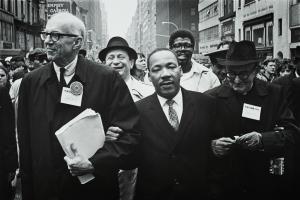
28, Quai des Messageries
71100 Chalon-sur-Saône
phone / + 33 (0)3 85 48 41 98
e-mail / contact@museeniepce.com
Classic website / Français
Photography with tension
Florence and Damien Bachelot’s collection
02 15 … 05 18 2014
Art lovers Florence and Damien Bachelot developed a passion for photography ten years ago putting together a collection through auctions and galleries. The collection started off with a base of French humanists (Brassaï, Doisneau, Cartier-Bresson…), branching out into the wealth of American photography (Lewis Hine, Sid Grossman, Bruce Davidson…), with a contemporary offshoot (Stéphane Couturier, Luc Delahaye, Mitch Epstein, Paul Graham, Edward Burtynsky…). Shifting from a black and white intimate image to a very current poetic of ruins, the collection seems at first to favour variation, but finally reveals its constant intention to cover the social and the urban. It bears witness to a society in construction, undergoing constant change, as well as a decomposing world.
Collecting is a profession in itself. And, if one were to listen to collectors, it takes more than just a fat wallet to establish oneself in a sustainable and original manner in the restricted world of vintage photography. Any collection, in order to stand out, must paradoxically examine the photographs and create a distance with them. While the collection is a personal one, it is obvious that the recognition of others for one’s work is expected.
The strength of Florence and Damien Bachelot’s collection, its brutality even, goes hand in hand with a clarity that serves a depiction of the “human condition”. Empathy kept the bright and intense colours alive in their minds. This private passion is the exact opposite of a self-satisfied or charitable take. It denounces, testifies against. Even though none of that really changes the edifice, the flaws of our time, racism, poverty and war appear as raw truths: an insult to intelligence and progress. This collection feeds off the real world, with all its faults. It is as good as any modern source of information. Its only end is the morals and, let’s not beat around the bush, the edification of the spectator!
Belief in the creative and poetic power of photography has proven to be intact. The photographer can, through the camera, change the course of things. More than just recording it, he or she dominates the real. The photographer sees where others flail around blindly. This collection is a clear affirmation of the difference between the photograph taker and the rest of the world.
Let us note another of this collection’s merits. It breathes freedom. Known names, but so few icons…
In the end, collecting is more than a profession. And seeing these images that have been so patiently brought together, we realise we haven’t insisted enough on what exactly they share, a gravity. No, a tension.
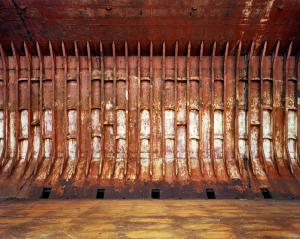
28, Quai des Messageries
71100 Chalon-sur-Saône
phone / + 33 (0)3 85 48 41 98
e-mail / contact@museeniepce.com
Classic website / Français
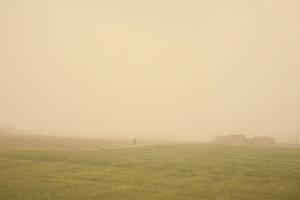
Kathryn Cook, Memory of trees
02 15 … 05 18 2014
How to approach mass murder without falling into “compassionate” or strictly documentary forms? The Armenian genocide, unlike the Shoah, was revealed from the start through photography. Denounced in 1915 as a “crime against humanity and civilisation”, the facts were well known and covered by the international press.
A century later, Kathryn Cook takes on the Armenian question, approaching it through poetry and allusions. She handles the metaphor effectively, purposely getting lost between the past and the present in an in-distinction that blends history and the intimate.
In 1915 on April 24th, on signing a deportation act against the Armenian community, the Ottoman government organised the first genocide of the 20th century. The Armenians were then forced to walk across what we now know as Turkey with no food or water, on a difficult road, through deserted land, snow-covered peaks and arid plains. In order to escape certain death, many converted to Islam going as far as to hide their origins from their own children.
The American photographer Kathryn Cook (b. 1979) has been documenting the landscapes that provided the backdrop for these forced marches for a long time. She travelled to meet with the descendants of these deported populations, looking for their slowly revealed history. In the village of Ağacli in Anatolia (literally “the place of the trees”), where the Armenian community have been breeding silkworms for centuries, the silk-making tradition is being brought back to life by the Kurdish population. Only the ancestral mulberry trees bear witness to the Armenian presence. Kathryn Cook has taken it upon herself to collect the traces of a tragic past. By examining the consequences of the events that occurred in 1915, she is attempting to create an impossible representation of an invisible suffering, of old, unexpressed pain that needs to be exhumed, talked about and shared in order to build a collective future.
More than a century after the fact, the representation of the Armenian genocide, a tragic cornerstone in the history of mass murder, continues to call into question the very foundations of photography. What can be said of the incident ? That it took place, certainly. That, at times, it might feel somewhat’ overexposed’. It’s even become a historical axiom. If, for most part, the precise characteristics and causes of the genocide remain obscure, this is of little importance because the slaughter itself is incontestable. In defiance of reason, however, there is little interest in the contemporary repercussions of the massacre. Paradoxically; this may be an unexpected consequence of the abundance of proof.
We are not lacking documentation. We can count at least twenty public or private collections around the world that contain eternally unbearable images of events. All of which confirm, for those who need it, the reality of the 20th
century’s first genocide: more than one-and-a-half million Armenians killed.
The photography here, contrary to that of the Shoah or the Cambodian genocide, provided methodical documentation of the ethnic cleansing policy carried out by Turkish leaders: the destruction and pillaging of villages, the forced conversions to Islam, the massive deportations to the Syrian desert, etc. The massacres were on a scale never before seen and ushered in the mass violence of the 20th
century. As early as 1915, the acts were designated as’ crimes against humanity and civilization’ and were widely reported by the international press. Photography captured and catalogued indisputable proof of the ramifications of this union between age-old barbarity and modern logistics.
The photography of Kathryn Cook doesn’t need to provide testimony. Who knows why this American photographer, with her roots in the news media, wanted to grapple with the work of bereavement! By examining the consequences of the events of 1915, she attempts the impossible task of representing invisible suffering. She tries to develop a form for grief, to give shape to bygone, unexpressed pain. In the style of a road movie – or is it a type pf rite of passage? – the photographer is freed from the temptation of objectivity as she explores the sites of the Armenian people’s dramatic peregrination. More apprentice than investigator, dhe manifests a sense of impotence when it comes to providing an ‘objective’ account of the traces of the genocide. This is where documentary photography, and its mystical capacity to create a buzz, is called into doubt and reveals itself to be inadequate in the face of silence, amnesia, and, to say it all, the abyss. In search for the original manner of treating the Great Crime, Memory of trees affirms that rationality must be nourished by poetry.
François Cheval,
Extract of the book
Memory of trees
,
Editions Bec en l’air, 2013
Exhibition co-produced with Marseille-Provence 2013 and the MuCEM, Marseille
Kathryn Cook is a member of Agence VU’
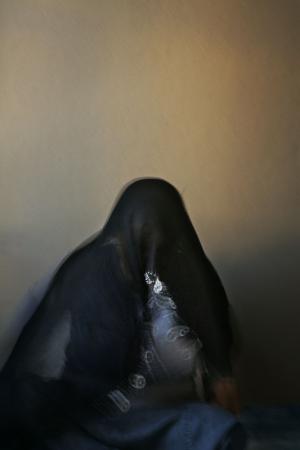

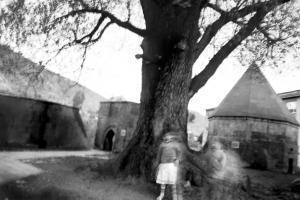
28, Quai des Messageries
71100 Chalon-sur-Saône
phone / + 33 (0)3 85 48 41 98
e-mail / contact@museeniepce.com
Classic website / Français
Photography is all about intention. We think that the photographer must control every step from the taking of the shot to the printing. But what happens when the original film is obsolete? The Lebanese photographer, Ziad Antar’s series Expired, gives in to chance. The use of film way past its sell-by date in cameras that are themselves sometimes damaged, hands the reins of control to the arbitrary. The artist then plays with the informal drips, stains, remains of a representation. The photography of the decomposed real, with no control, blends with traditional vanity: it makes the bodies and architecture of a world that has forgotten it is ephemeral disappear.
For the past ten years, the Lebanese artist Ziad Antar (Saida, 1978) has been taking a chance on the formal vagaries that result from using silver film that is past its sell-by date. He found the film in the studio of his fellow Lebanese photographer Hashem El Madani, and they have provided the experimental raw material for the “Expired” series, an experiment in the photographic image that is both aesthetic and philosophical. Ziad Antar questions the very nature of photography, the intention that presides over the finger on the button. The altered state of the chemicals on the materials removes any control over the finished shot. The artist gives himself over to chance.
Everyone knows that thanks to industry, machines and above all merchandise, the consequence of numerous personal experiences and daily trials, the use of a camera requires neither training nor even effort. Today’s cameras suppose a rapid learning process and handing all authority to the machine. The genius of the technical gesture has no justification in the current mode of production except as easily deployed by the end-user.
With “Expired”, Ziad Antar willingly gives into a game of denegation of the technician’s posturing. The process is anything but complex. It requires an out-of-date film, provided by an old Lebanese photographer, inserted into an old camera. There is no choice but to surrender to chance! Nevertheless, it remains that the refusal to practice photography “traditionally” by an obstinate illiterate does not contradict the photographic act. It inaugurates another time when, searching for a revealed truth, one laid the foundations of conformity for the beautiful image and the principles of art photography. No irony on the “successful” image, others did that in the seventies. “Expired” refuses the verdict of the vision pre-established by the technical process and instruction. The series plays with the divergence between the instructions for use and their corruption! Where in the end there should only be but misunderstanding and failure, we end up with an object of stupefying beauty re-defines the interpretation of the photographic.
Extract of "Expired or the decomposed double",
François Cheval
From the book "Ziad Antar - expired", Beaux Arts de Paris Editions / musée Nicéphore Niépce
28, Quai des Messageries
71100 Chalon-sur-Saône
phone / + 33 (0)3 85 48 41 98
e-mail / contact@museeniepce.com
Classic website / Français
After Darkness :
Klavdij Sluban, a retrospective [1992-2012]
2013 10 12 ... 2014 01 12
Photography, for Klavdij Sluban is a pretext for travelling, for experiences and encounters, and gaining a better understanding of each person’s reality. The Slovenian photographer bears witness to what he sees, not to what he should have seen. He eschews the anecdotal, relates no events, remains outside the current, and doesn’t hesitate to capture the in-between times when nothing is happening. In the four corners of the earth, he harnesses the atmosphere of a city, the darkness of a jail, the solitude of an island. An often chaotic world where man is never far away. Klavdij Sluban’s work appears to be located out of time on purpose. The charcoal aspect of his grainy prints and his commitment to black and white are part of the beauty. The photographer’s sensibility is in symbiosis with the reality of the world.
This exhibition is the photographer’s first retrospective, showcasing twenty years of work that is already present in the most prestigious of international collections.
A train compartment, a prison and an island, Klavdij Sluban’s encounters with human destiny happen in enclosed places. These spaces produce feelings of solitude, boredom and at times, terror. Following a continuous path, and a steady moral compass, Klavdij Sluban heads into regions that have been abandoned by God. The trip itself holds no interest. There is no such thing as time either. There are only portraits of men and women suffering as he does. Haggard in the face of history, each face is an interrogation, a question asked of destiny. Photography aims to be radically out of time but nevertheless it is located in the very greasy and charcoal matter of facts. It states and presses. Each image gives us a glimpse of catastrophe. Through the windows of the train, behind the security glass, we can only see greyness and the impossibility of living. Simply.
At times, in Cuba, in Haiti, the bodies revolt and refuse the diagnosis. Beauty, as it still exists in this unhappiness, remains a necessity. The corpse-like beauty of a young inmate, of a profile, glimpsed in Siberia, of an old lady in a bus, the form it takes is that of melancholy. The photographer is not a documentarian neither is he an “auteur”. He takes no part in the debates that animate the photographic world. The only noise that comes from his images is that of the cold wind or the swell of the sea. Here, things are silent. Talk is scarce. And confessions are even scarcer. In this world without complaint or recriminations, in this obscure state, the narrative is short. That’s just the way it is, there’s no point.
But this narrative is never direct. Between the real and the photographer there is a pane of glass, a window, a tear, and always a lens. Before embarking on a voyage, Klavdij Sluban already knows what he will find and feel. Back to square one, the second he crosses the border, walks into the prison, he is plunged into a world he knows, without contrast. Life is not the confusing and contradictory puzzle presented to us. It takes on the tragic and literary form of a dying animal, of predestined lives.
He has seen too many condemned inmates, heard too many sentences for photography to be the subject of controversy. We could say however that photography, as practiced by Klavdij Sluban, is paradoxically made up of sensuality, sadness and severity.
But we never feel like fleeing these images. It is as if we are being presented with a vision of our own conscience. Something gets us by the throat; a face to face with child inmates, the greyness of the city, the sparse landscape of an east European country. But it’s still beautiful! We can’t find any other adjective to describe these photos. And we are not talking about the type of beauty that makes the pain of the world look good! This is an extreme beauty that reflects nobility and reveals to us the tragedy of our existence.
So we need to see three sequences, the train, the prison and the island, as the same film that provides us with a Passion without Christ, a world in thrall to stronger forces. We are left with the stoical, overall image of an unanswered question and above all the obstinate will to link beauty to melancholy.
This body of work, patiently built over twenty years, is shown without illusions. The time is gone when one photo alone was enough to open eyes and consciences. In fact, that time never existed. But what makes these remarkably few images so powerful is this feeling of powerlessness that is far from resignation. This immobility is nothing less than a monument erected to our condition.
François Cheval
28, Quai des Messageries
71100 Chalon-sur-Saône
phone / + 33 (0)3 85 48 41 98
e-mail / contact@museeniepce.com
Classic website / Français
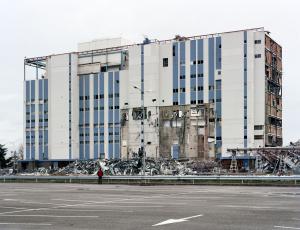
Robert Burley
The Disappearance of Darkness
2013 10 12 ... 2014 01 12
Silver based film is dying, silver based film is dead. Digital technology has shifted photographic film into the domain of history and heritage. Its disappearance resulted in that of the entire industrial and commercial system that kept it running: factories, offices, studios, stores… All these spaces are now abandoned and facing destruction.
In 2005, the Canadian artist Robert Burley started to explore these now deserted locations where the noise of machines and conversations still seems to float in the air. His first target was Kodak, photographing the empty interiors of the Toronto factory, then the much-covered implosion of the historical Rochester and Chalon-sur-Saône factories, before moving on to other manufacturers: Agfa-Gevaert, Ilford, Polaroid…
In addition to the simple immortalisation of emblematic places, Robert Burley’s images tell the story of the disappearance of the material culture of photography.
The “Robert Burley, The Disappearance of Darkness” exhibition is a natural follow-on from the Michel Campeau show in 2012. Campeau, another Canadian, did a photographic inventory of the last dark rooms on the planet.
In recent years, Robert Burley has been documenting the end of silver-based photography through the abandonment and destruction of the factories that make photographic film. The exhibition is organised in tandem with the Ryerson Image Centre (Toronto), and focuses on the historical moment when technological changes irreversibly redefined the photographic medium. The Disappearance of Darkness deals with the relatively sudden and brutal end to a hundred-year industry. In 2005, Robert Burley was given permission to take photographs of the Toronto Kodak factory, an industrial complex that manufactured film, photographic paper and equipment. Over a period of a year, he recorded the abandon and demolition of the Toronto factory before moving on to other manufacturers whose factories were also progressively closing down: Kodak France, Agfa-Gevaert, Ilford, Polaroid. In 2007, he witnessed the implosion of the Chalon-sur-Saône Kodak factory, the last trace of the brand’s presence in France. As a photographer who usually explores landscapes and architecture, Robert Burley naturally took an interest in the compact aspect of the buildings whose unique architecture enabled mass production. The exterior views show formidable monolithic structures with no windows, stripped of all human presence and movement. These ghost factories seem to have undergone a nuclear attack. Through the emptiness and silence, these photographic tableaux evoke the devastating economic consequences that have resulted from the digital revolution.
Robert Burley (b. 1957) teaches at the School of Image Arts (Ryerson University, Toronto).
A book in English accompanies the exhibition:
Robert Burley, The Disappearance of Darkness: Photography at the end of the analog era
Princeton Architectural Press, 2012
160 pages
Isbn: 978-1616890957
Exhibition curator: Gaëlle Morel, curator at the Ryerson Image Centre, Toronto

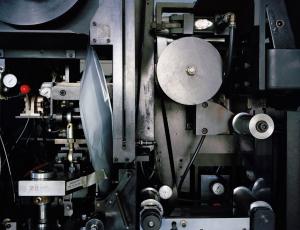
28, Quai des Messageries
71100 Chalon-sur-Saône
phone / + 33 (0)3 85 48 41 98
e-mail / contact@museeniepce.com
Classic website / Français
Charles Fréger
Uniform(s)
06 15 ... 09 15 2013
Military uniforms, work overalls, ice-skating and ceremonial costumes form the basis of Charles Fréger’s photographic work. The strict protocol to which he adheres in the creation of his portrait series goes way beyond a simple inventory. The initial impression of documentary work is misleading. What we have are actually psychological portraits, where each subject affirms their membership of a social body through their uniform.
The musée Nicéphore Niépce has been an ardent supporter of Charles Fréger for many years and is now showing his first big retrospective with over one hundred images.
Year after year, the obsession persists, compulsively. Countless exhibitions, accompanied by impressive catalogues and books have succeeded one another, and Charles Fréger provides us yet again with a new and always unusual series. Enriched with a knowledge of sociology and anthropology, we think we know everything about human beings and their unbridled taste for ceremonial dress and accoutrements of all kinds. And then with Wilder Mann, an extravagant assembly of men born before God was invented assuring us of the madness of humanity whose instruction will never end.
It has something to do with an inventory, or is quite like one. But in order to found a reasoned catalogue, the artist would need to use a typological method. And is this really possible? Can one truly isolate the predominant factors in each series? In other words, does the uniform maketh the man?
The images themselves are too complex for the reality to be that simple. Charles Fréger is an observer who places us right in front of real phenomena. He provides us with his considerations. The operation is characterised by a will to reference all of the problems of taking a shot using a technical grid. It also determines a concrete method aimed at outlining the characteristics of each group studied. Paradoxically, the idea of a typology collapses as this photography looks neither for a cause or an explanation for the real, concrete man.
The Human Sciences have perhaps established a logical link between Japanese sumitoris, Finnish synchronised skaters, « French » legionnaires and Royal Highlanders. The feeling of belonging to a group, the solidarity that exists between age-groups or integration rites has not escaped « scientific » analysis. Charles Fréger’s point of view is very different. One after the other, his photographic series form a coherent discourse, an underlying thread through the madness of the body and the social.
Each episode is a singular fact built according to the photographer’s own set-up. Far from a simple shot, we are close to the absolute in terms of description. Charles Fréger has been a sumo wrestler, he has ice-skated in Helsinki, and he has even joined the army and buttoned up his spats.
By ignoring the spectacle of the uniformed parade, the ceremonial aspect of these situations, we realise that the only real event is a fake gathering, a private ritual, for the photographer’s use only. So let us leave aside all references to August Sander, to German photography, to the New Objectivity, to serial references and let us examine in depth the real issue, the photographer’s obsessions.
Charles Fréger unilaterally accentuates the point of view; he links together a multitude of isolated phenomena the finality of which is above all aesthetic. He is not formalist, but he is the first to be fascinated by the scene he organises. The backgrounds are primordial. They are not just there to highlight the model; they project the idea of a luxurious iconography, a collection of preciously preserved chromos. We could reproach him for this. But, he respects the spectator too much, delivering a flow of cultivated information, text and references. This surplus of words throws no light on the issue and only admits a sense of marvel and enchantment for these tableaux of postures and times past.
There still are territories where man has found himself and has gained in terms of harmony and perfection. This world rejects shadows and gives itself without hold anything back. Does this mean that we can’t find any imperfections or anything bizarre in these portraits of human beings?
The perfectionist dramaturgy procures a sense of immediate satisfaction. Everyone gets obvious enjoyment from the geometry, the shine and the palette of colours. What an illusion is this resolution of the tensions and contradictions of the world, the artifice of a place without roughness! The anxiety is evident on all of the faces. We catch a glimpse of an immanent danger, an expectation that the perfect organisation of the second skin is the only thing that could upset things.
There exists, between the photographer and his models, a community of feeling, sensations and fears. The photographer is apprehensive of failure or shortcomings, the consequence of which is the creative void. This is why he hunts down his fellow humans in their most accomplished form. He is a despotic photographer, imagining himself at the head of the « Fréger Guard ». With his photographic machine, an instrument of social control, he orders or feigns a coding of the body and desire. What he does is the opposite of the documentary, moving definitively away from descriptive photography; Fréger’s work reveals itself to be the most accomplished form of schizophrenia in the modern world, an illusory and obsessive attempt to free oneself from tension to better capture mood swings, anguish and outbursts.
François Cheval
28, Quai des Messageries
71100 Chalon-sur-Saône
phone / + 33 (0)3 85 48 41 98
e-mail / contact@museeniepce.com
Classic website / Français
The photos we don’t throw out anymore…
The donation of Patrick Bailly-Maître-Grand’s private collection
06 15 ... 09 15 2013
The museum is holding an exhibition of the donation made by the artist Patrick Bailly-Maître-Grand of a collection of various photos, picked up here and there and anonymous for the most part. It includes amateur and professional photographs from all eras and depicts the psychological profile of the collector posing the question of the ultimate destination of these images which appear to be ordinary at first glance but whose evocative and aesthetic power means they are preserved for posterity. The exhibition explores the “sacred” character of photographs that retain something of the living which prevents their being consigned to the dumpster.
So-called anonymous photographs are the molecules of an ocean of visual clichés, banalities, standardised social codes, and a hackneyed aesthetic. They show no more than what we already know of aesthetics, of time passing, of death: beautiful sunsets, birthday cakes, memories of Ibiza, granny in the garden, my shiny motorbike, etc. etc.
How is it that today they garner such attention and are displayed in our galleries and museums which, by definition, only show that which is rare? Elementary my dear Watson: this mud contains gold! Paper pumpkins hide golden carriages, glass slippers lie in rubbish bins…
All collectors of anonymous photographs know that there is nothing quite as depressing and as exciting than hours spent rummaging through soggy shoeboxes full of fragile vignettes, only one step away from the dump. But the reward is exceptional when, amongst the chaos, the collector comes across the sublime accident, the magical fault, the essential unseen gem!
Collection in this area is but the expression of one’s own fantasies of the « hunter of chance ». Luckily, the hunter has nothing to fear from other « hunters » as they are only interested in their own prey. In a batch where one will find a gem, others will find nothing. One only sees what one knows; the emotion felt upon the discovery of one of these treasures results from the collector’s personal knowledge and culture. A collection of anonymous photographs is an authentic psychological and cultural portrait of the collector.
And what if there was a catastrophe in the making? With the triumph of new digital technologies (without any physical trace on ever-evolving equipment), it is not at all certain that our jumble sales of tomorrow will still have « hunters » to worry about the fate of our old, obsolete and unreadable CDs where the only information will be written in marker: “Ibiza photos. 2010” …
Patrick Bailly-Maître-Grand
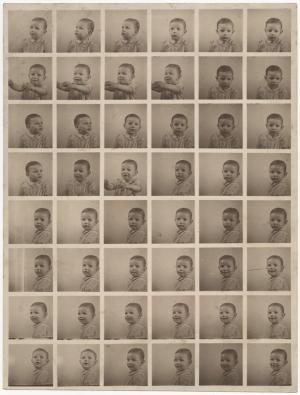
28, Quai des Messageries
71100 Chalon-sur-Saône
phone / + 33 (0)3 85 48 41 98
e-mail / contact@museeniepce.com
Classic website / Français
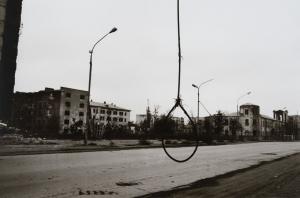
Stanley Greene,
On the road to a war
02 16 ... 09 01 2013
For three decades, Stanley Greene has travelled the five continents to bear witness: wars and conflicts, famine and destruction are at the heart of this American photographer’s work. From the fall of the Berlin Wall to Hurrican Katrina, from war-torn Afghanistan to Chechenya, Stanley Greene documents the world’s big events, his reportage makes no concessions and places the photographer at the centre of the narrative.
In 2013,
the musée Nicéphore Niépce and the photographer, represented by Noor Agency, signed a partnership agreement that is unprecedented between an artist, a press agency and a public institution. The photograher’s archives, whether donated or on loan to the museum will be highlighted and developed, the museum commits to a series of inventories, digitisation and exhibitions of the collection.
This, the first exhibition « Sur la route d'une guerre » (On the road to a war), presents shots taken in Chechenya between 1994 and 1996.
« My photographs of this conflict are not about technique or ‘art.’ They are the product of pure gut feeling. (…) My anger is total. »
Stanley Greene
The musée Nicéphore Niépce now houses an important collection of photographs by Stanley Greene (b. New York, 1949). Greene is one of the rare representatives of investigative photo-journalism working today. His reportage work shows his commitment, independence and his need to bear witness and convince. He is an ex-Black Panther and works mainly in modern warzones, getting involved in conflict that is usually ignored by the Western press.
This was the case in Chechnya. The invasion of this young independence-seeking republic by the Russian army in 1994 that was supposed to be a lightning operation, turned into a long-term horror story. Never, since the Second World War had a capital city – Grozny – been razed to the ground and an entire people massacred. Stanley Greene travelled through this hell from 1994 to 2003. His photographs denounce a one-sided conflict: the immense Russia against the tiny Chechnya, a total war carried out for a postage-stamp to make this Muslim population pay for its two-century old resistance.
Courtesy Noor Agency, Amsterdam


28, Quai des Messageries
71100 Chalon-sur-Saône
phone / + 33 (0)3 85 48 41 98
e-mail / contact@museeniepce.com
Classic website / Français
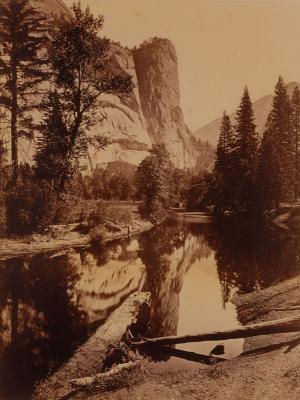
[BLV] 5,
End on a high note
16 02 ... 19 05 2013
The importance and eclecticism of the writer and art critic Bernard Lamarche-Vadel’s photographic collection has enabled multiple thematic or monographic presentations since it was loaned to the musée Nicéphore Niépce in 2003. The collection reflects the passions and aspirations of the collector, providing a partial vision of photography from the 19th century to the 1990s: from the poetry of the ancients to the at times hermetic character of certain conceptual creations, the Bernard Lamarche-Vadel collection includes a number of pieces that are representative of the history of photography: Nadar, Albert Stieglitz, André Kertesz, Helmut Newton, Bernard Plossu, Thomas Ruff, Bettina Rheims… Internationally known photographers rub shoulders with lesser-known artists highlighted by Lamarche-Vadel. Before the collection goes back to the family of the collector who died in 2000, one last exhibition will present a selection of its most emblematic photos. To end on a high note.
Were it possible to imagine an end to the range of experimentations carried out since 2003 with Bernard Lamarche-Vadel’s photographic collection, the point of entry has to be the title.
The collector himself had already imagined the end in 1981, with an exhibition of paintings entitled Finir en beauté (End on a high note)
.
The idea was to end one period on a high note before moving on to the next. It was at this point that he became a collector of photography, an avid one.
For the BLV5, Finir en beauté
exhibition, there should be only one title and the show should occupy its own space, an unexpected space in the usual configuration of exhibitions at the musée Nicéphore Niépce. It should appear in the distance and work as a decoy. It should have all of the attraction of a conceptual contemporary piece without having the quality. We could have easily just stuck on a reported quote from the collector, « Je vais partir mais dans un éclat » (I’m going to leave, but with a bang), and exhibit the pieces in the strictest intimacy, sparing the work, its exhibition. But this ending is not what BLV5
is all about. It is the TITLE and the END. Because the collection is going back to the Lamarche-Vadel family.
Because it has followed its path for the past ten years at the musée Nicéphore Niépce providing the subject of conversation between pieces, digital games that enabled it to travel to Paris, Lannion, Arles and Berlin.
Let us leave the work to express itself again. Austere, sombre, funereal, carried by red and black, a gleam and misfortune. Attached to pillars-rails with two sides, we will peruse it at our will, take in the litany of well-known photographers or perhaps we will recognise landscapes, emblematic figures from the art and literature worlds.
The BLV collection deployed thus as representative pieces of the totality of 1500 photographs, is presented in groups. From Joseph Beuys to Bettina Rheims’ castrated monkey, the same disturbing constancy emanates, the state of something that no longer exists. Time has stopped. Even happiness and the little birds seem to be touched. But the door is open and we can still hear the little birds, the air is still fresh. Finally, « we are free, the sun is broken, hello darkness. » (Alexeï Kroutchonykh, 1913).
Curator : Sonia Floriant
This exhibition was put together from the collection loaned to the musée Niépce by the Succession Lamarche-Vadel and Lamarche
List of photographs:
Félix Nadar, Jean-Philippe Reverdot, Josef Sudek, Gérard Dalla Santa, Etienne Carjat, Bettina Rheims, Umbo, Sophie Calle, Man Ray, Denise Collomb, Thomas Ruff, Bill Brandt, Brassaï, Philippe Bonan, Jérôme Schlomoff, Heinrich Kühn, Bernard Plossu, Berenice Abbott, Walker Evans, Lee Friedlander, William Klein, Weegee, Alfred Stieglitz, Lewis Baltz, Florence Chevallier, Jean-Luc Mylayne, Keiichi Tahara, Gérard Bustamante, John Coplans, Patrick Faigenbaum, Hamish Fulton, Lynne Cohen, Watkins.
This exhibition closes a cycle dedicated to Bernard Lamarche-Vadel’s collection by the musée Nicéphore Niépce
2003 (Chalon), 2004 (Berlin/SITEM), 2006 (Arles/Festival photo) Corpus, installation numérique restituant les 1500 photographies de la collection
2003 blv1, Hommage à BLV, premier opus.
2004 blv2 Jean Rault (Unes)-Jean-Philippe Reverdot (L’Epreuve)
2008 blv3 Sélection dans la collection de livres photographiques de BLV
2009 Dans l’œil du critique, Bernard Lamarche-Vadel et les artistes
, Musée d’Art Moderne de la Ville de Paris, 2009.
2010 et 2011 blv4 (Imagerie de Lannion et Chalon) Conversations entre œuvres
Reading
material
Inclinations, la collection selon Bernard Lamarche-Vadel
Texts : Isabelle Tessier, Danielle Robert-Guédon, François Cheval, Sonia Floriant, Michèle Chomette, Gaëtane Lamarche-Vadel
Filigranes Editions
ISBN : 978-2-35046-199-1
25 €

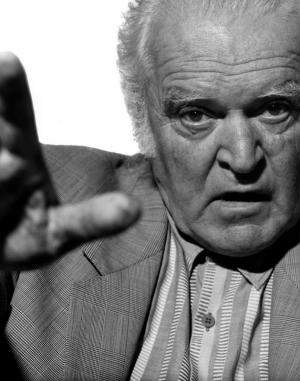
28, Quai des Messageries
71100 Chalon-sur-Saône
phone / + 33 (0)3 85 48 41 98
e-mail / contact@museeniepce.com
Classic website / Français
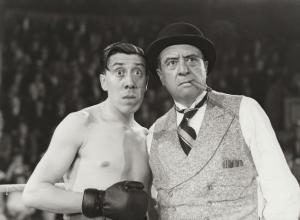
Associated Arts:
Photography in the service of cinema
16 02 ... 19 05 2013
The tie that binds photography to cinema is self-evident. Film feeds off photography. It constitutes the ultimate progress applied to the image with the addition of movement, then sound; the cinema outbid photography in spectacular terms. Film was popular from the start – unlike photography which remained inaccessible to the general public for a long time – and it spread its hegemony very rapidly, claiming its « superiority » over the non-moving image. However, film could never shake off the essential role played by the photographic medium in its commercial success. Promotional photos in the foyers of cinemas and stills from the shoot that revealed the inner workings were all aimed at informing and inciting the public to become customers. So, paradoxically, the cinema found itself dependent on the fixed image and ordered photographic narratives in magazines or on walls.
Cinema is still paying off its debt to photography. It emanates from photography but thought to break its ties from the poverty of the fixed image, regarding it as the origin, an antique that one can’t throw out but can consign to the attic. What if photography was detrimental to cinema? The photogram or still was thought to be incapable of rendering the effects of the edit as it disregarded « filmic time ». Eisenstein compared « beautiful » stills to « a disjointed muddle of beautiful phrases
»! Need we remind you that both media shared and still share common equipment and modes of broadcast? Even though it tried to emancipate itself from the simplicity of the photographic object, cinema had to eventually admit, it can’t do without photography. Photography ensures its existence with promotional shots before the film comes out or at the release, and throughout a film’s life cycle. It accompanies cinema, giving it coherence in the media and establishes it in the magazine and book universes.
The relationship between the two, that some have deemed testy, took on an original and complementary character at the end of the twenties thanks to the development of heliography. Publishing houses, but also cinema producers saw the possibility of ensuring the launch and advertising of film through the establishment of specialist magazines. Inversely, the unprecedented character of filmic narration largely led to the reinvention of photography and magazines at the end of the First World War.
In the end, these two moments in the history of the mechanical image reveal complementary meanings and provide different types of pleasure.
We now need to think of the still, not as a simple promotional illustration, but as a distance, an « extra » that reveals what we don’t see on the screen.
Curator: François Cheval
Research: Emilie Bernard, Marie-Odile Géron
Scenography: Christelle Rochette

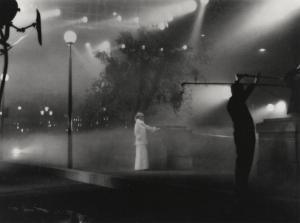

28, Quai des Messageries
71100 Chalon-sur-Saône
phone / + 33 (0)3 85 48 41 98
e-mail / contact@museeniepce.com
Classic website / Français

